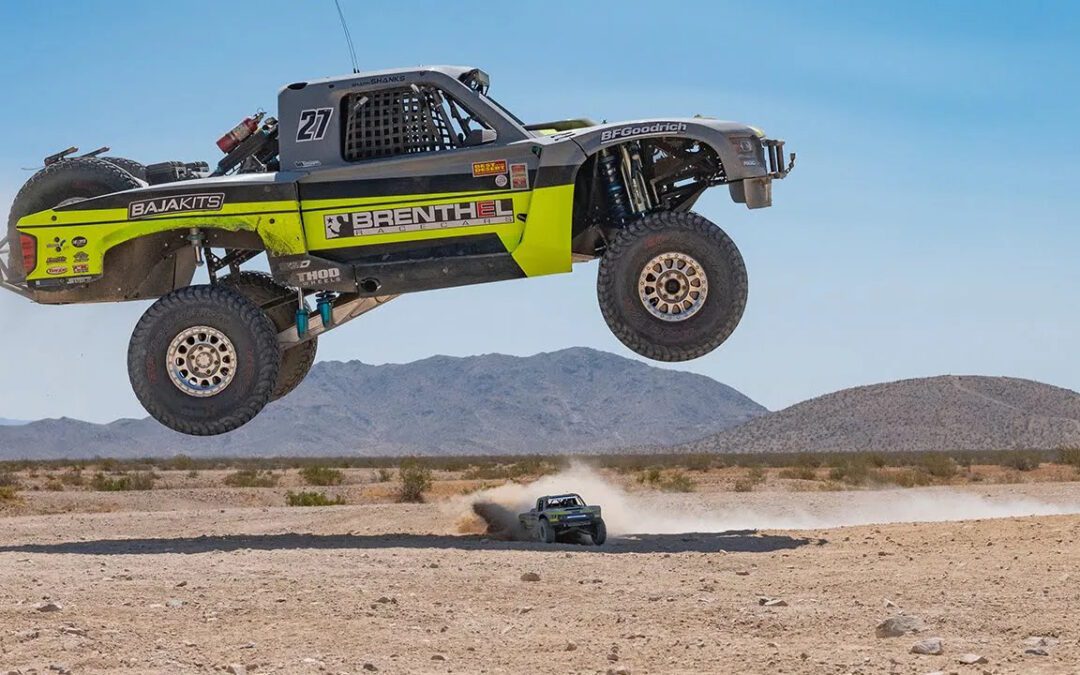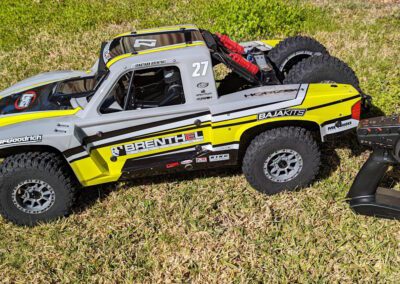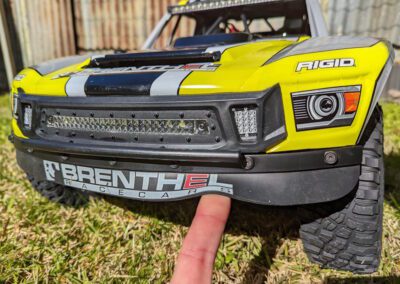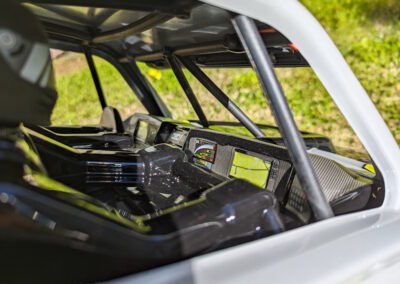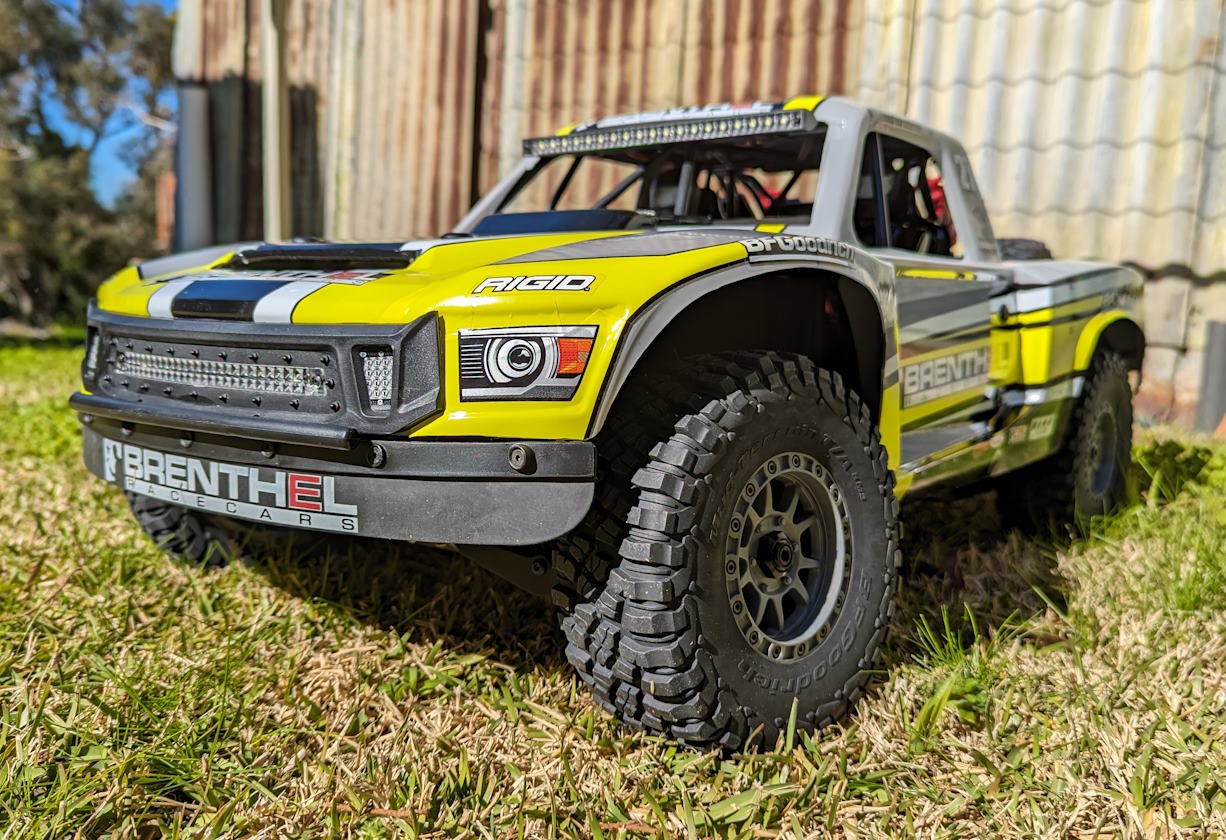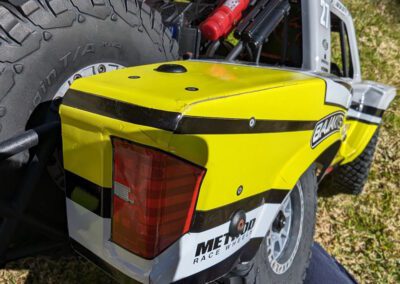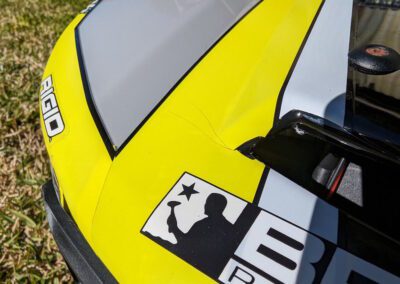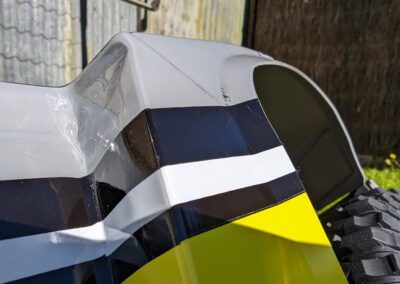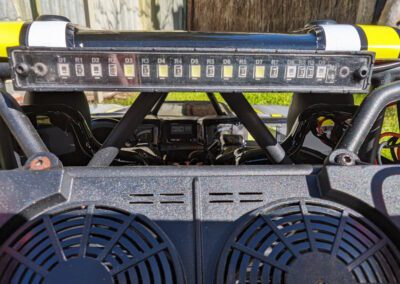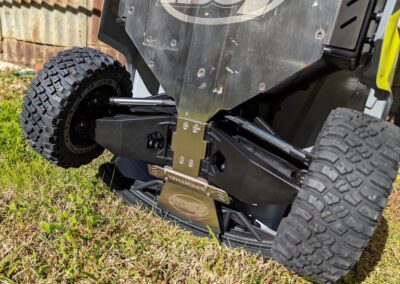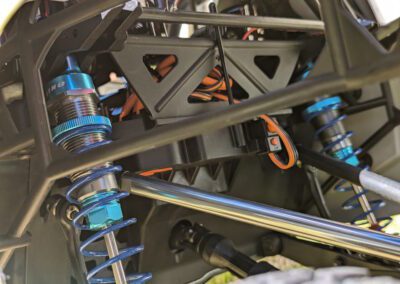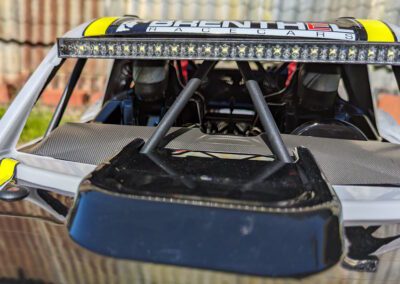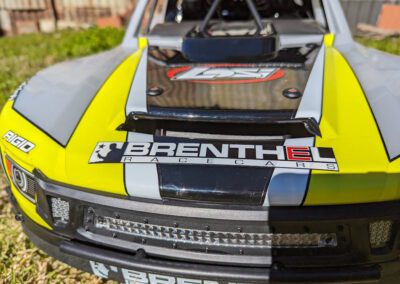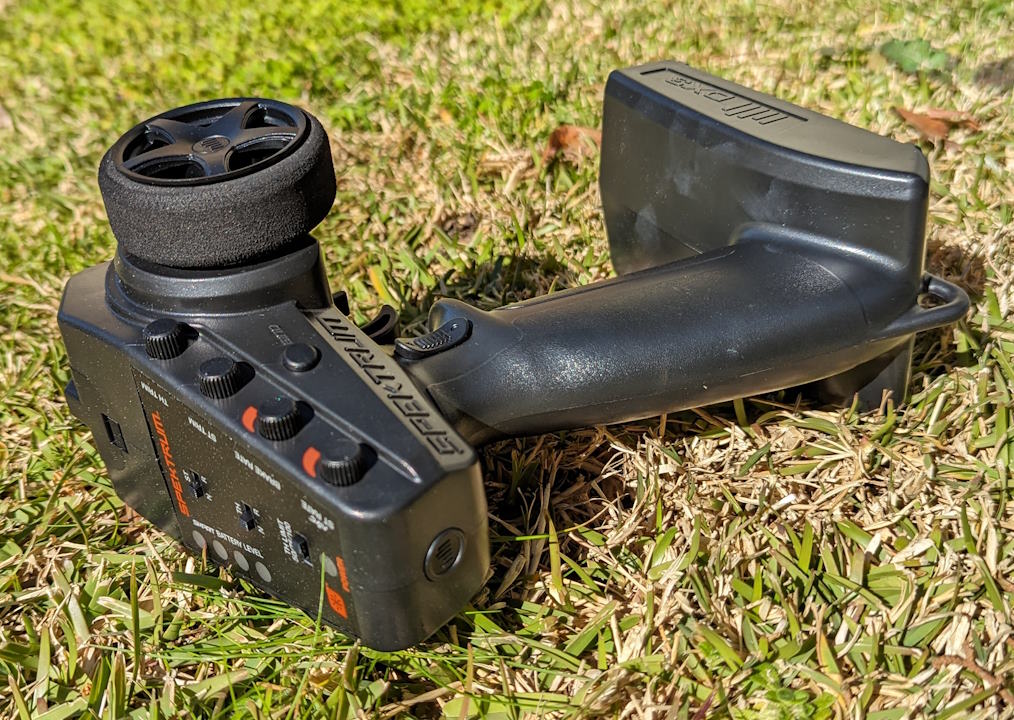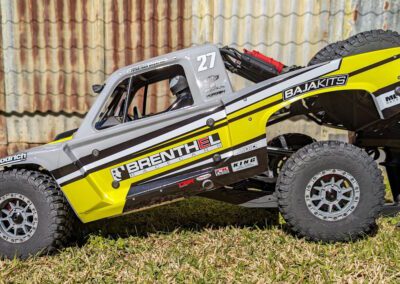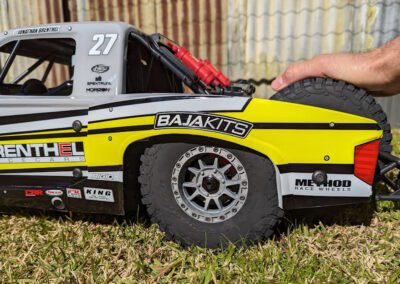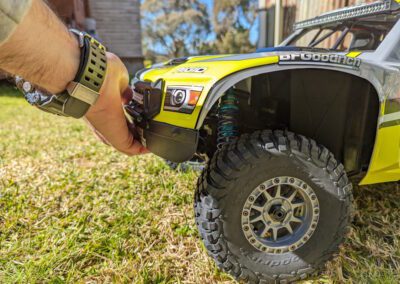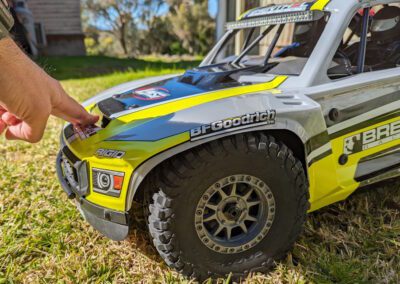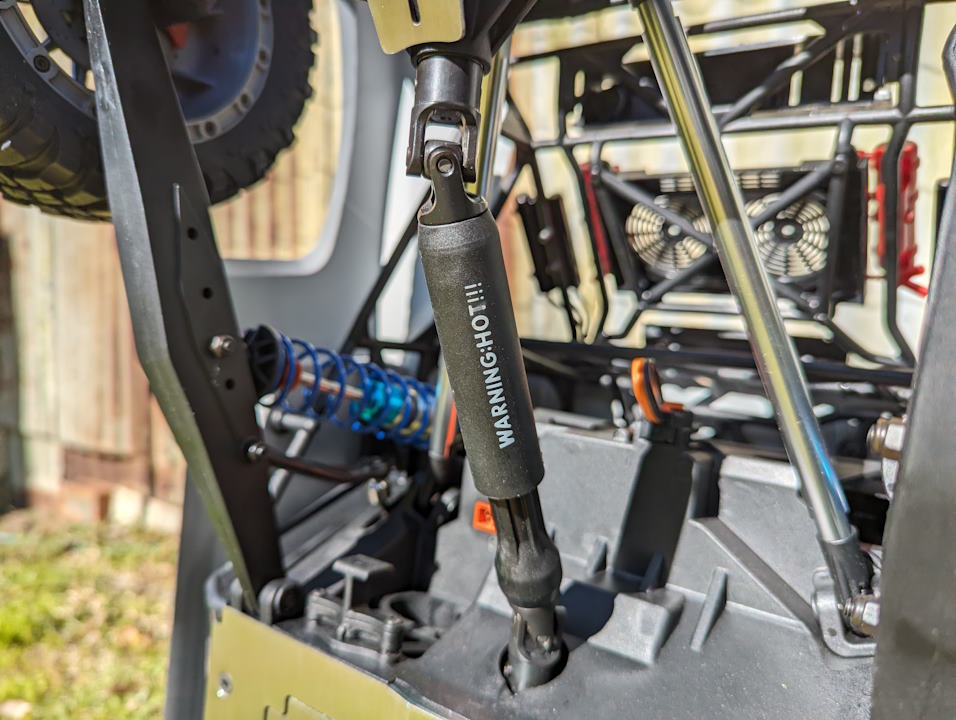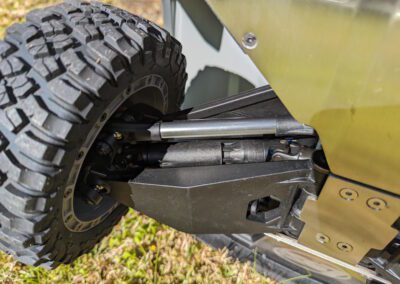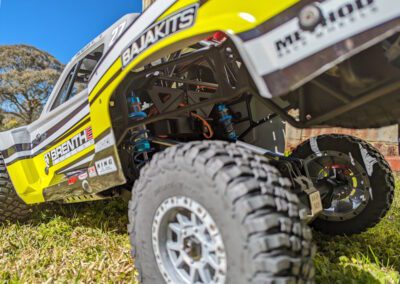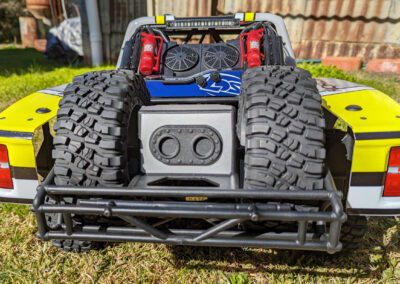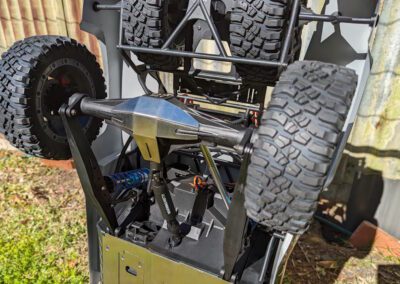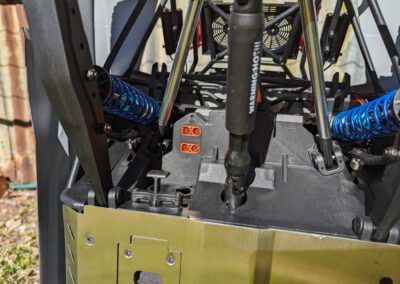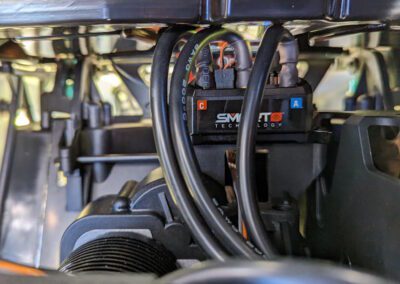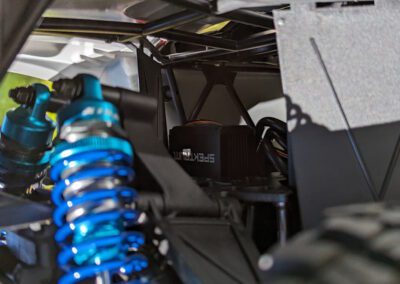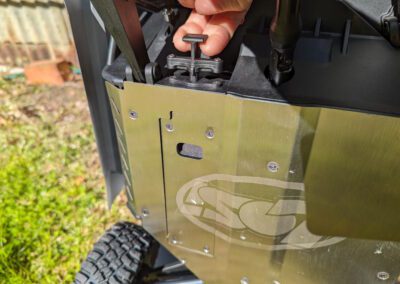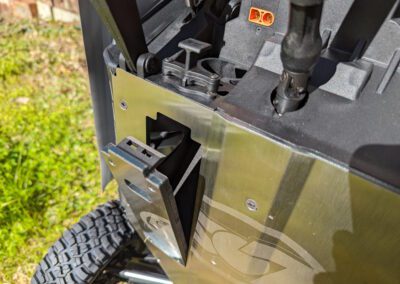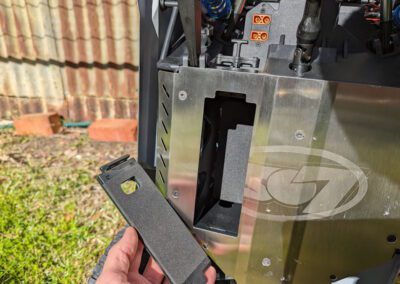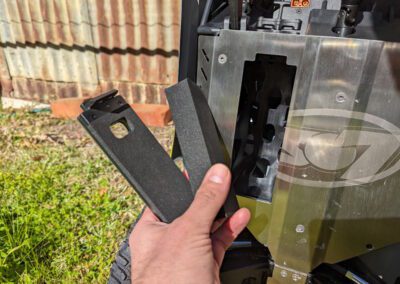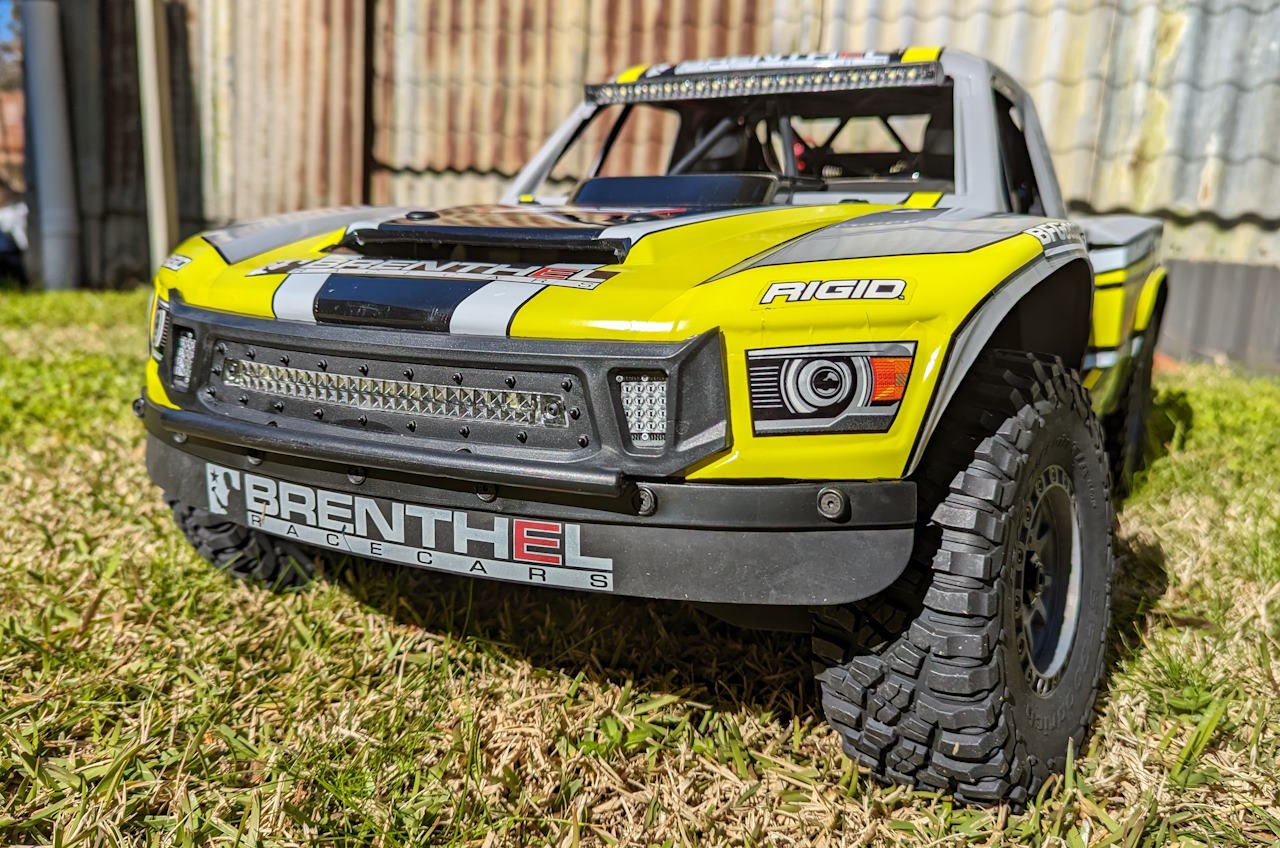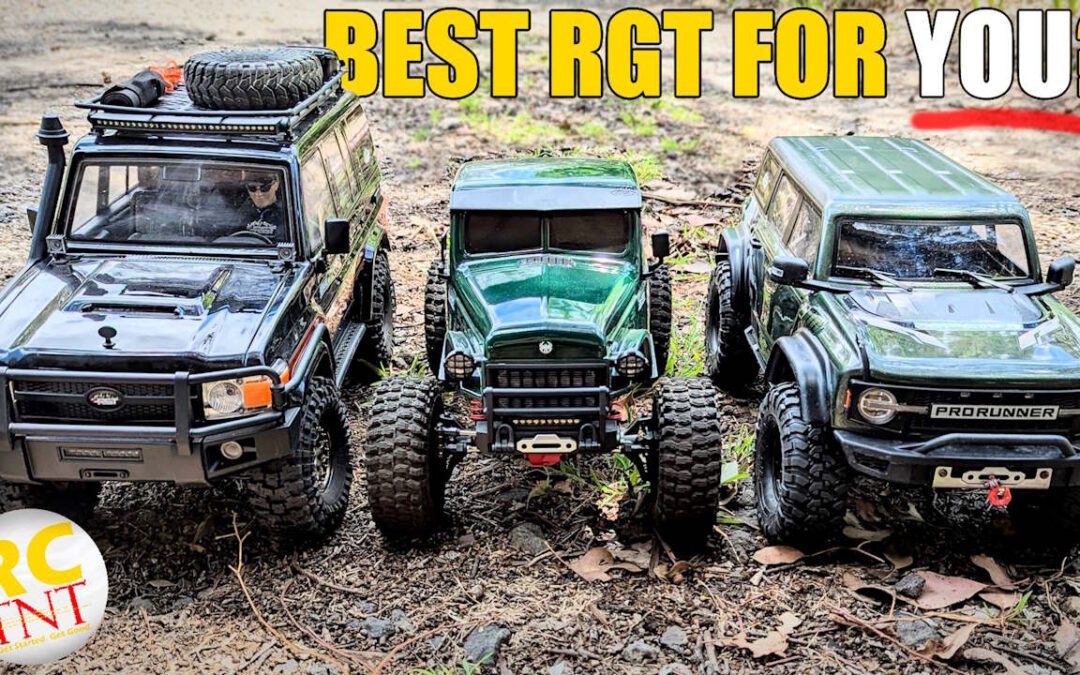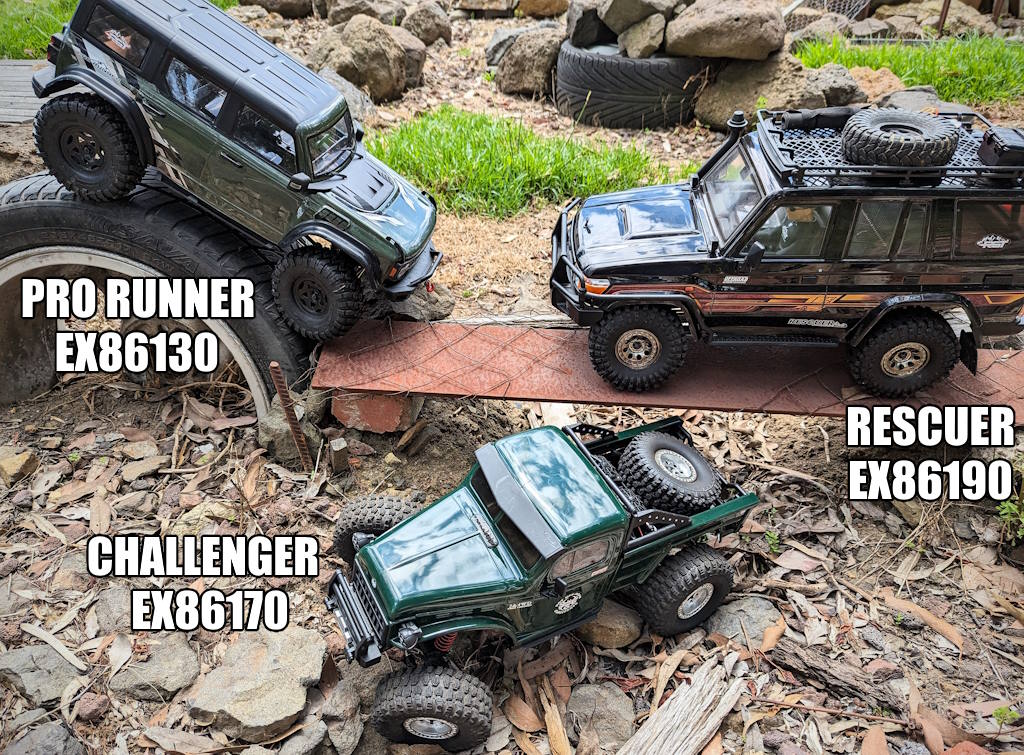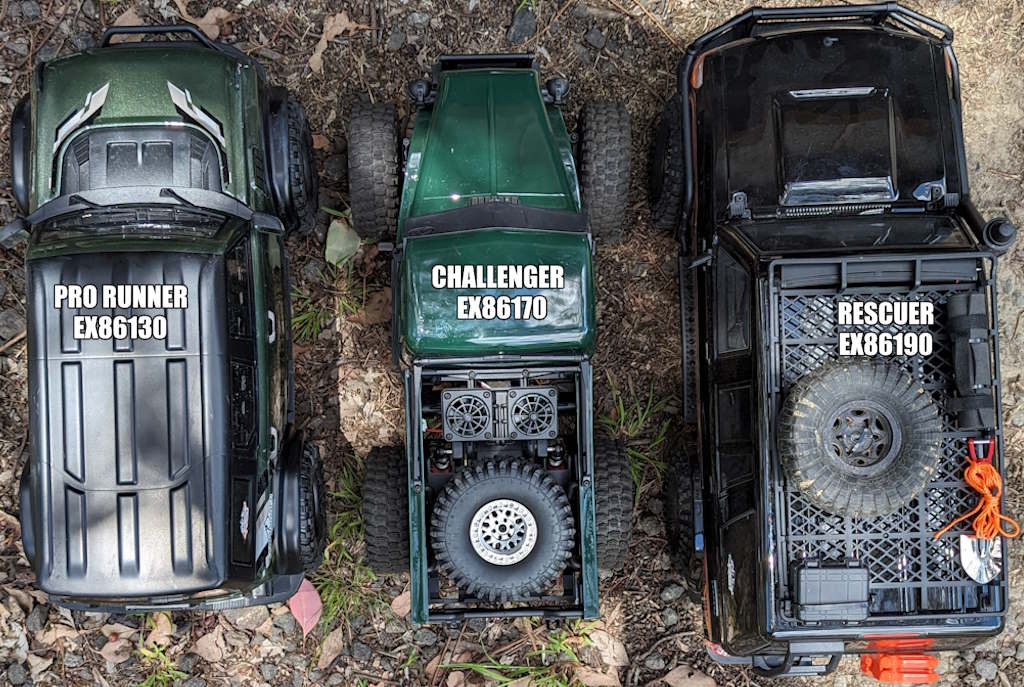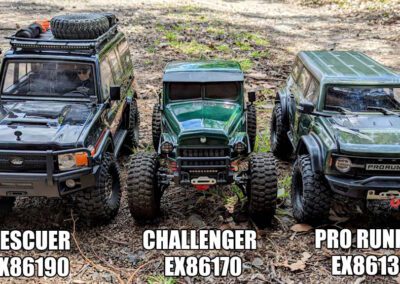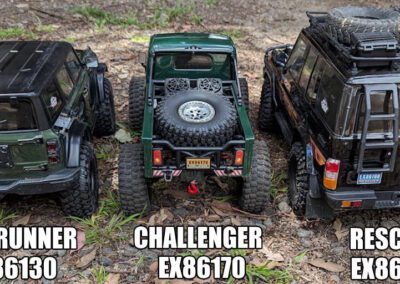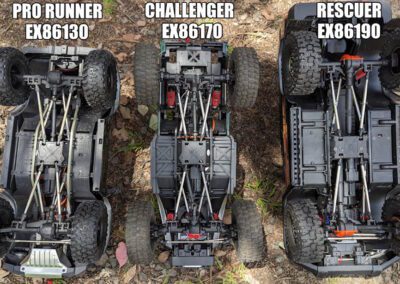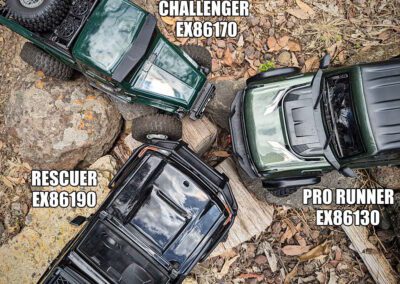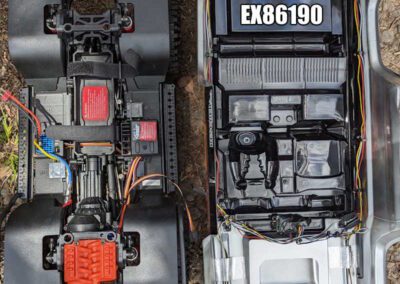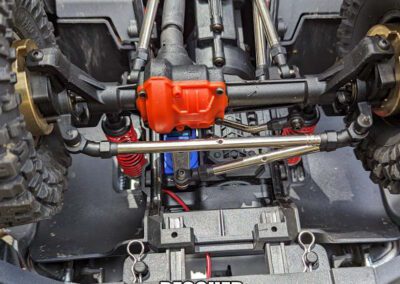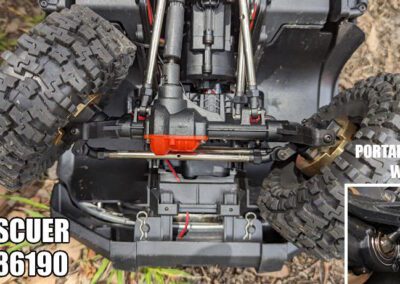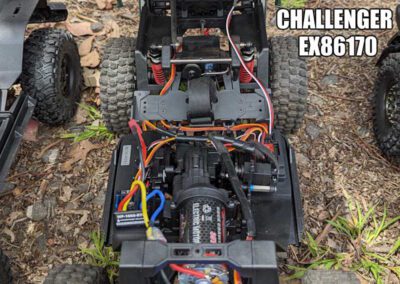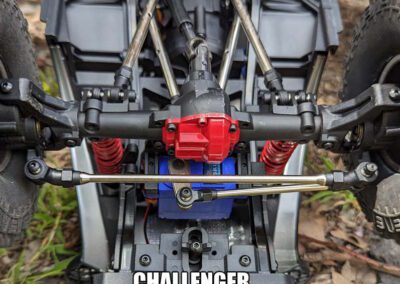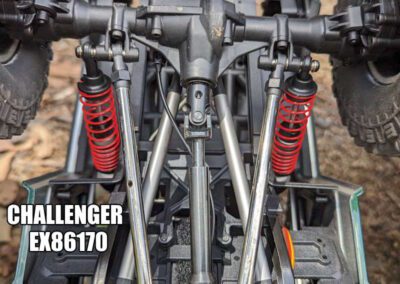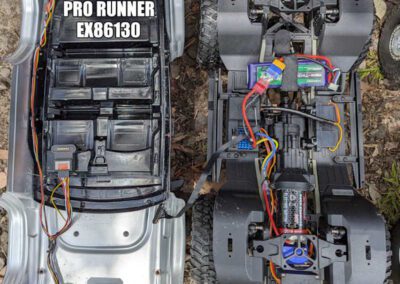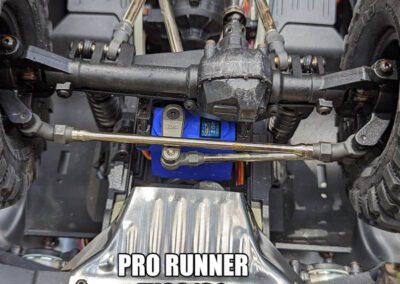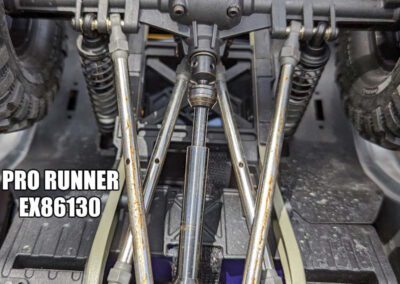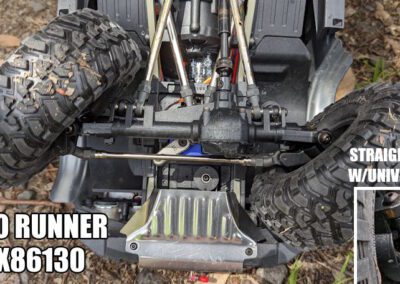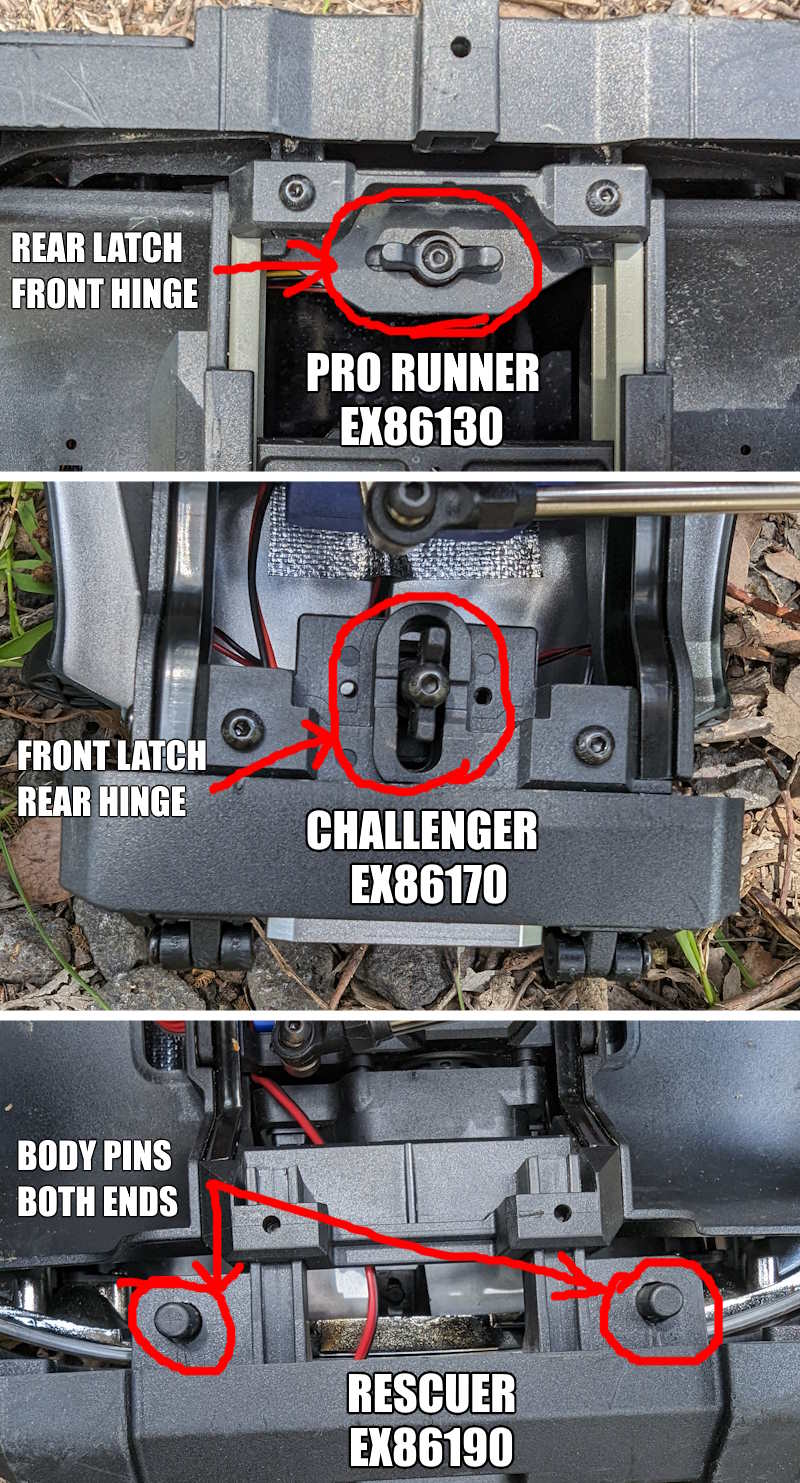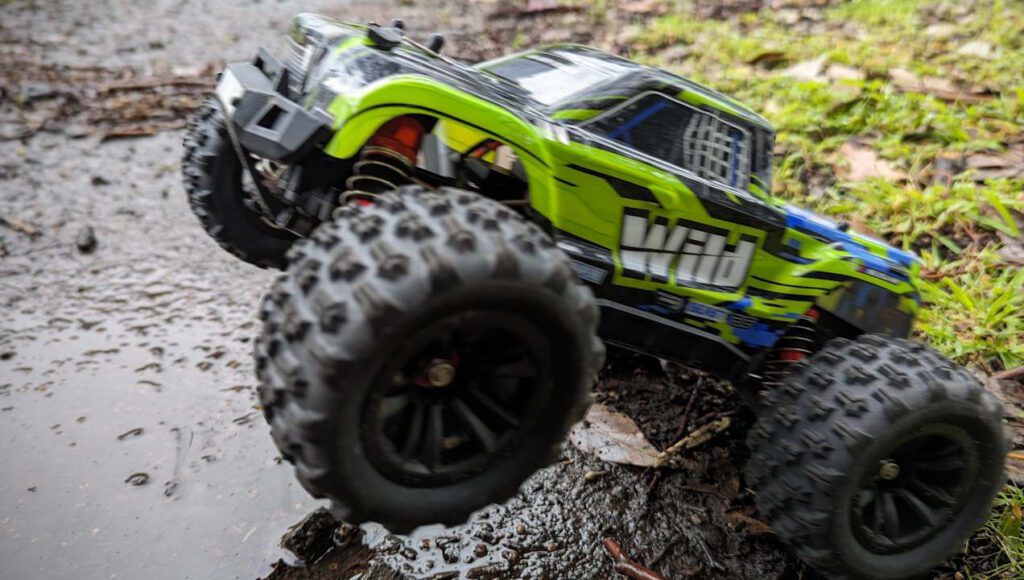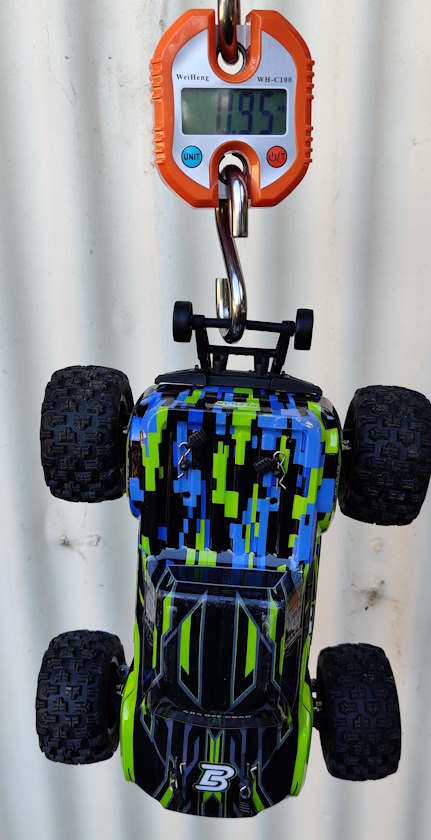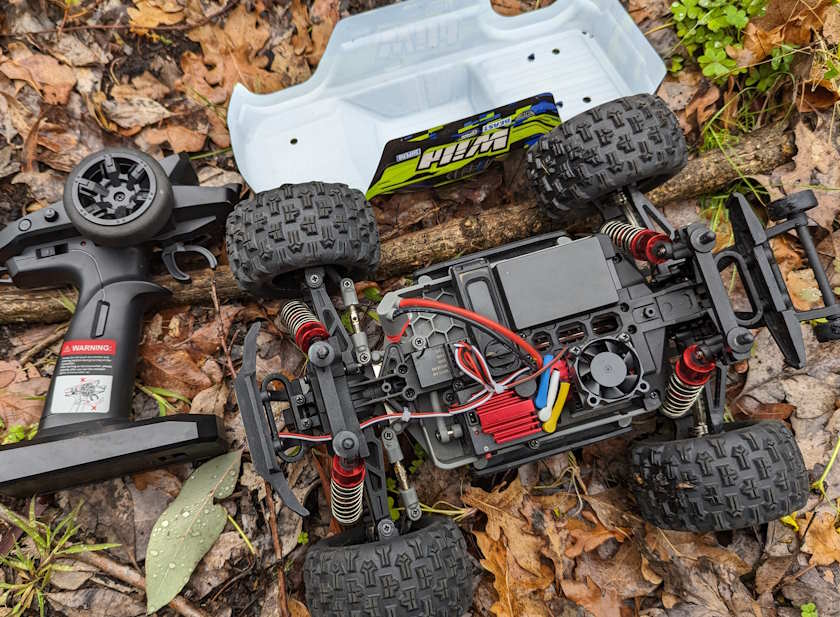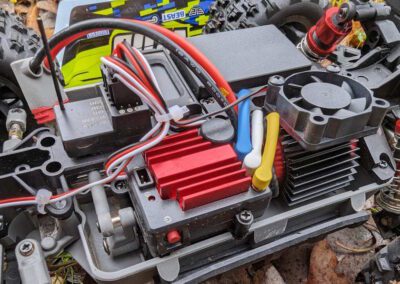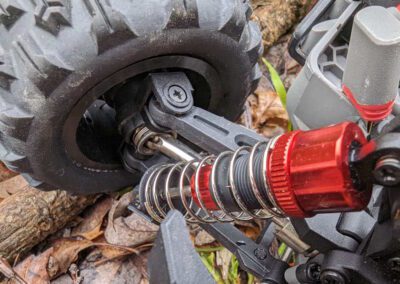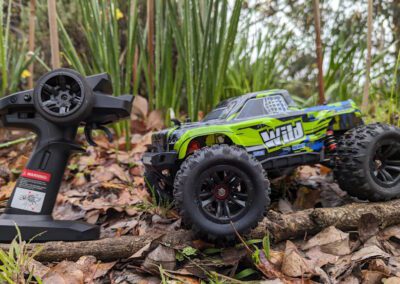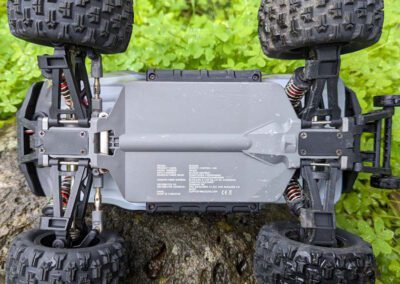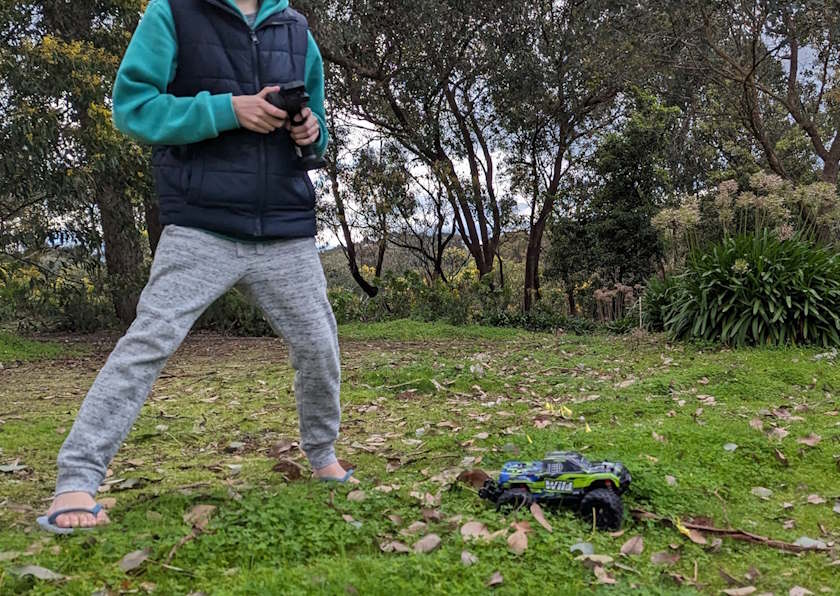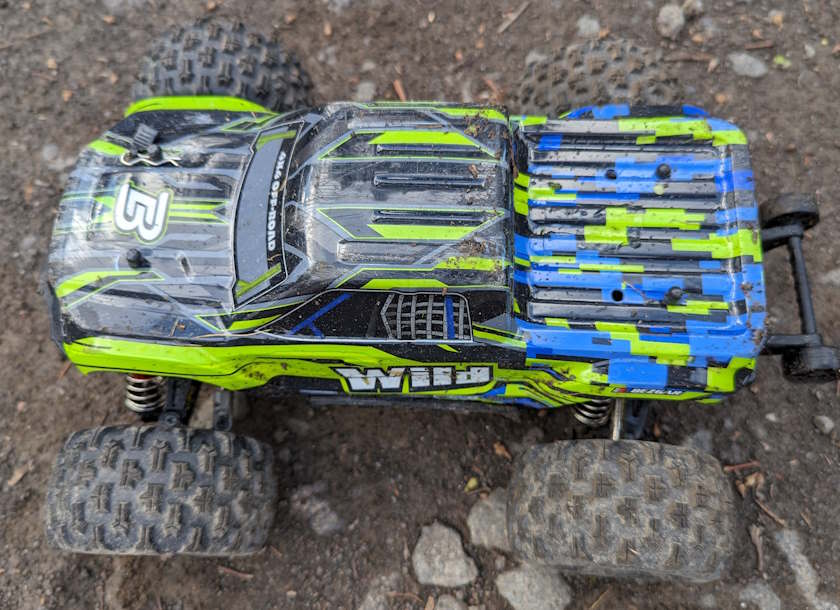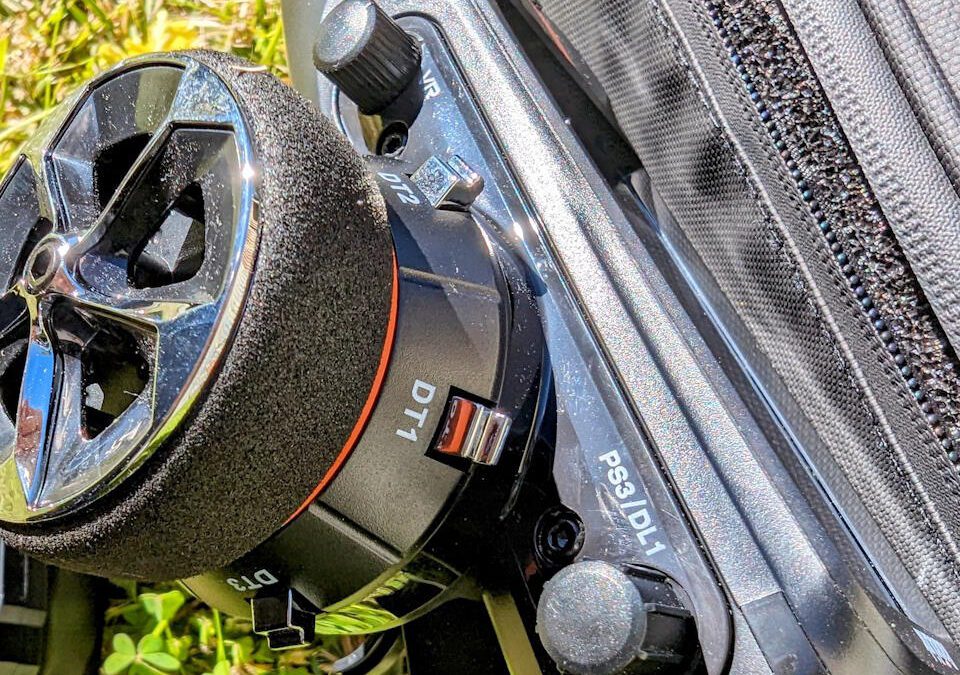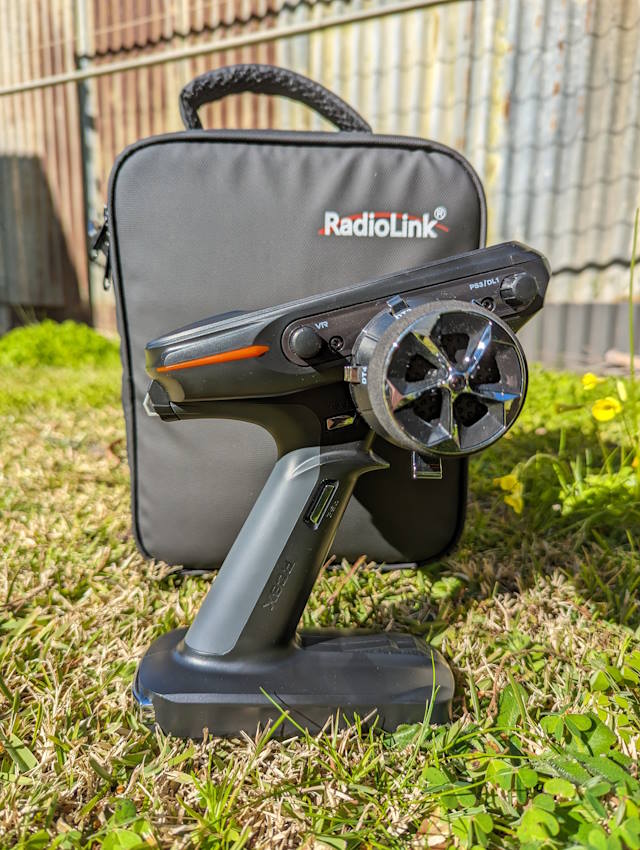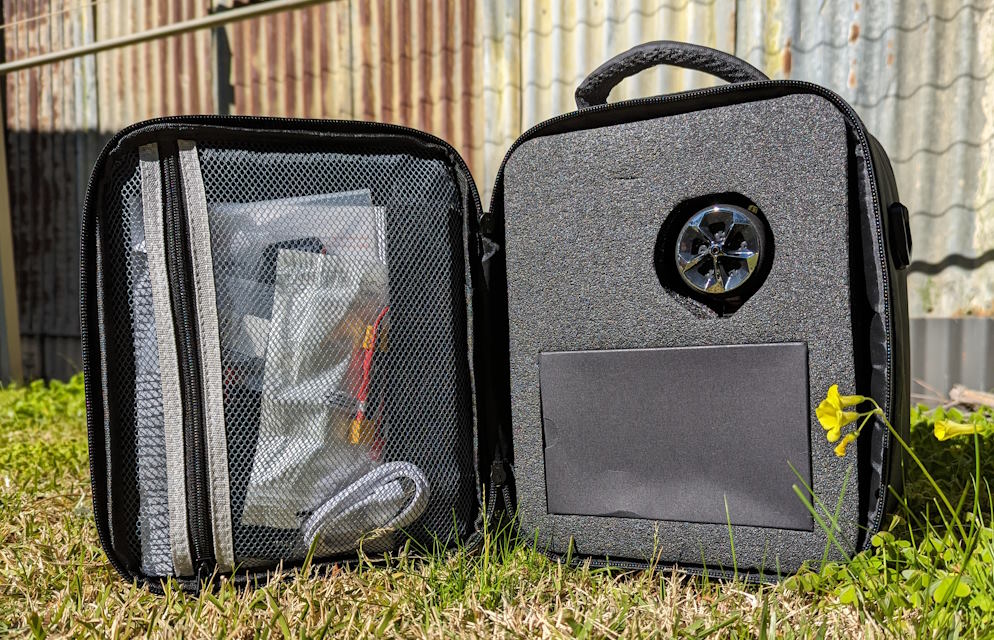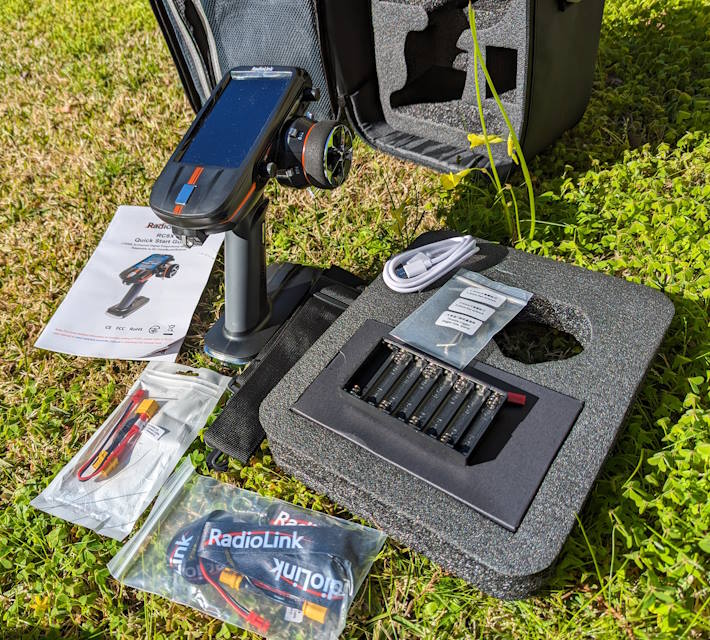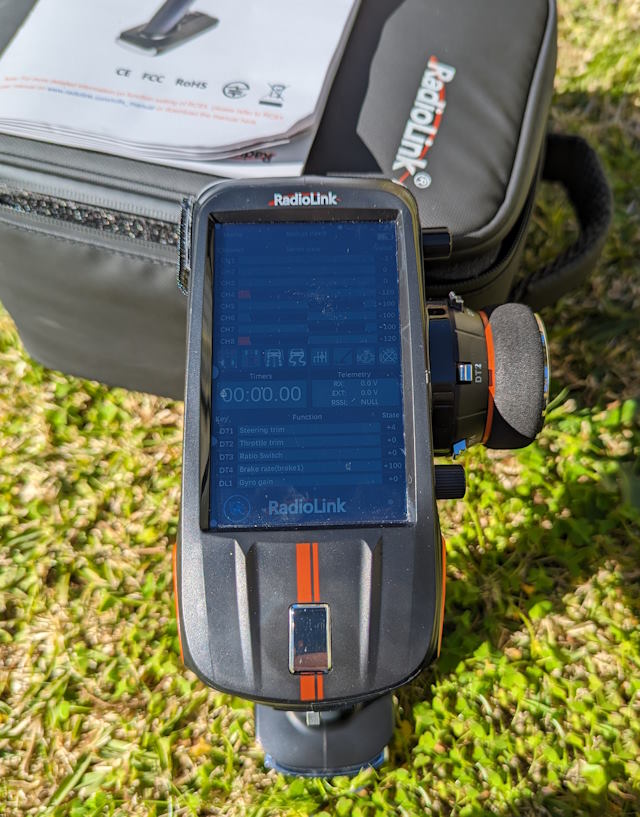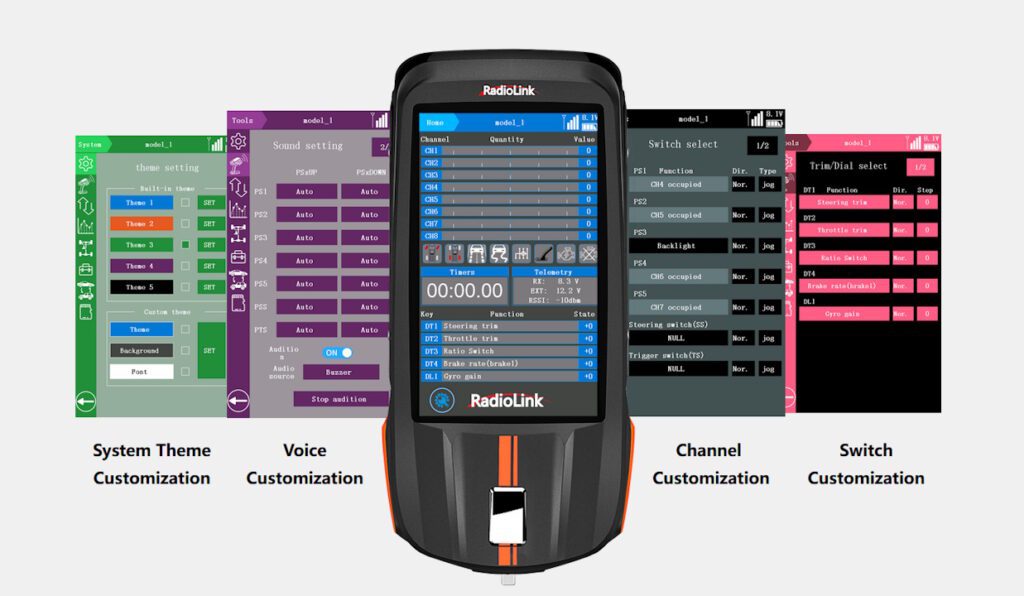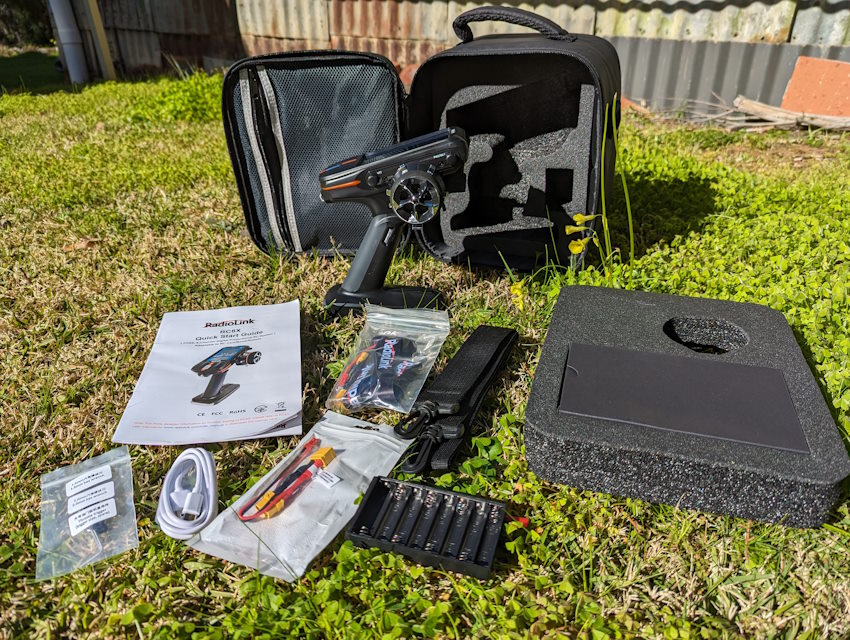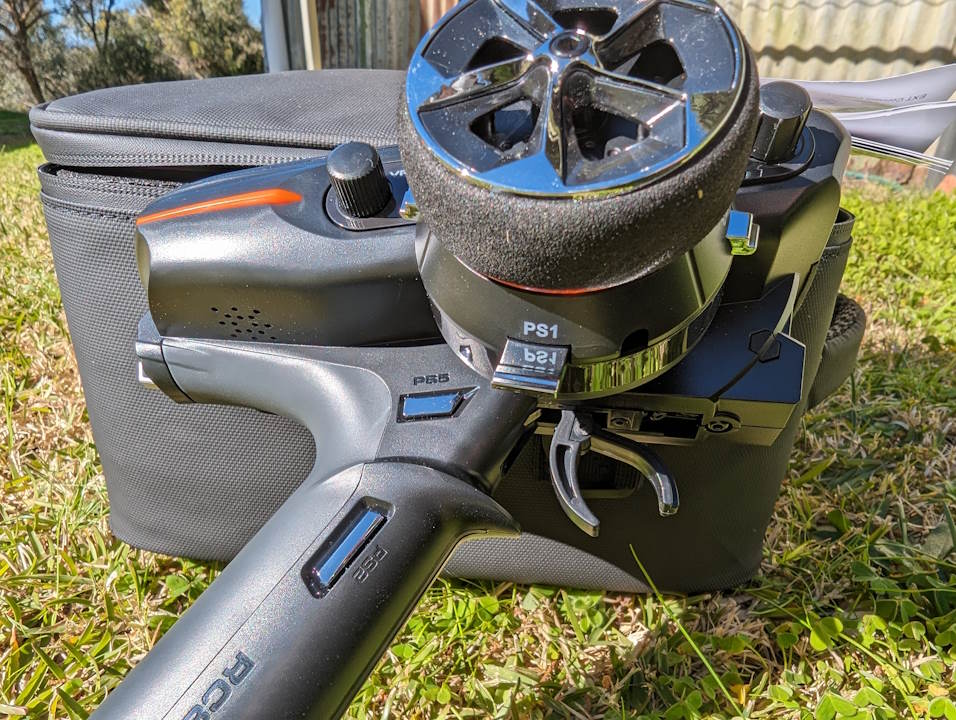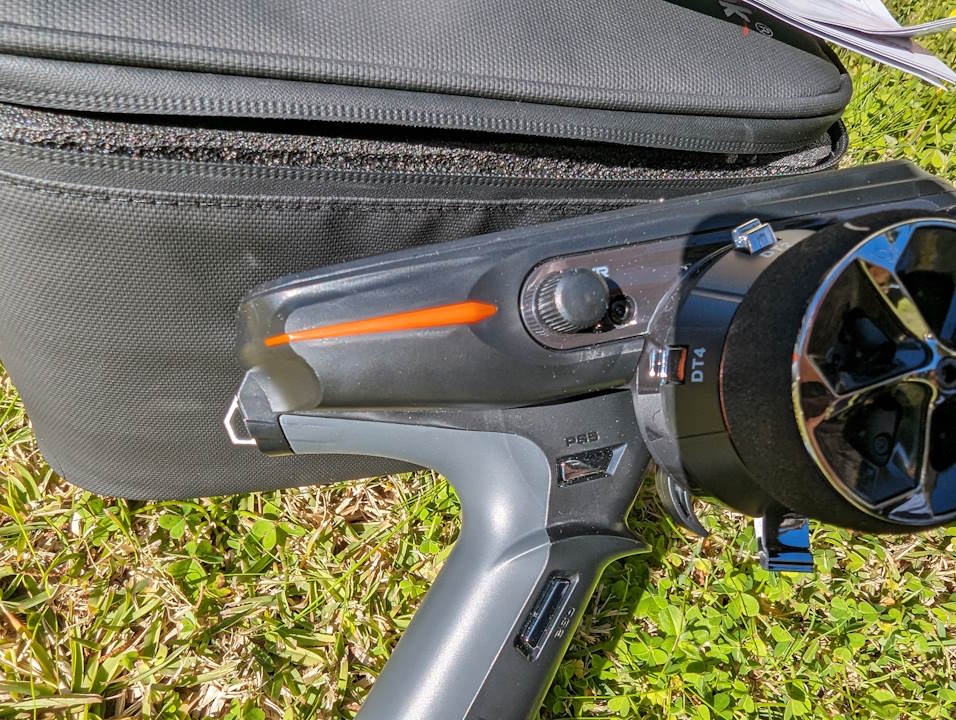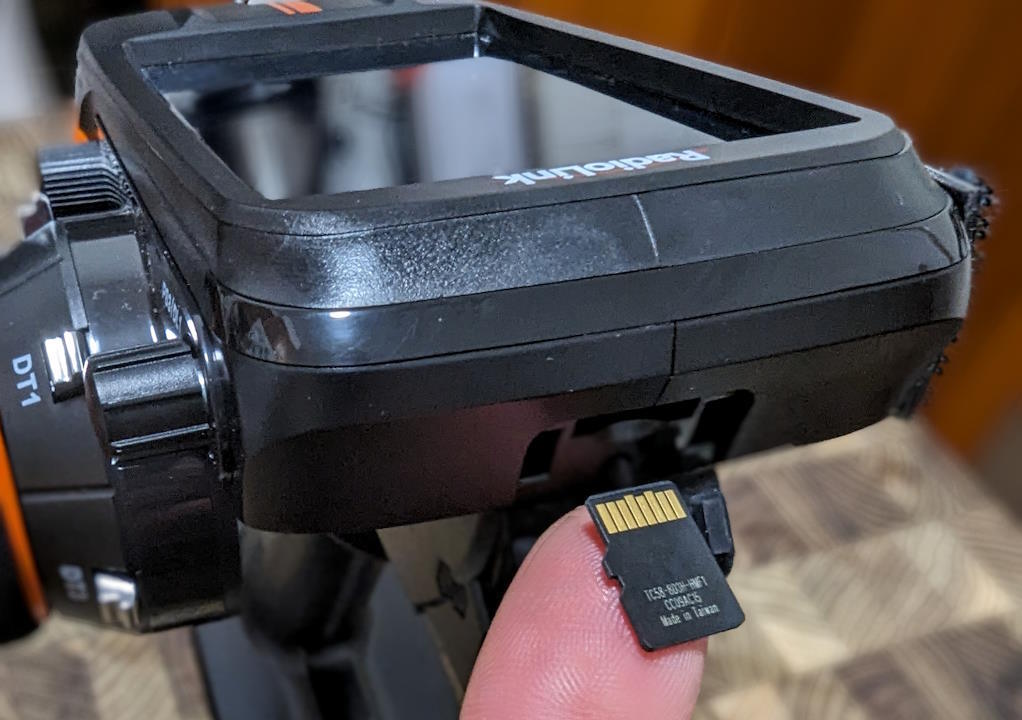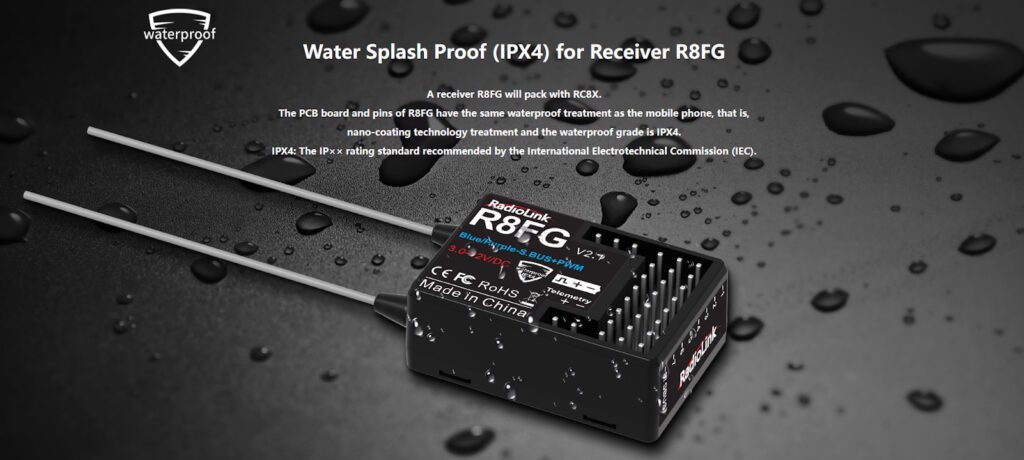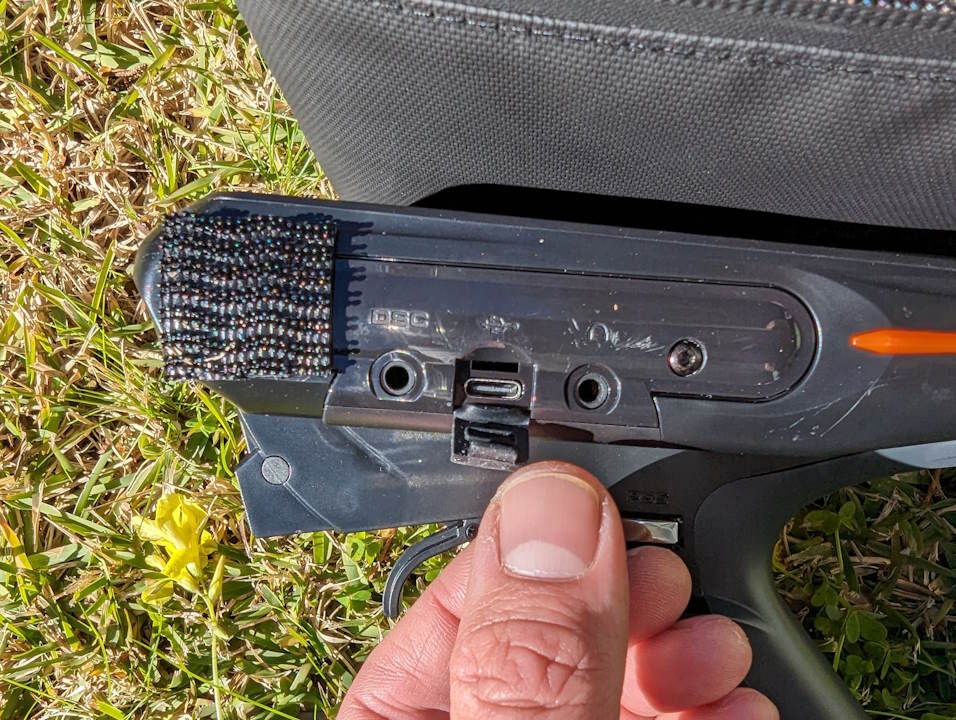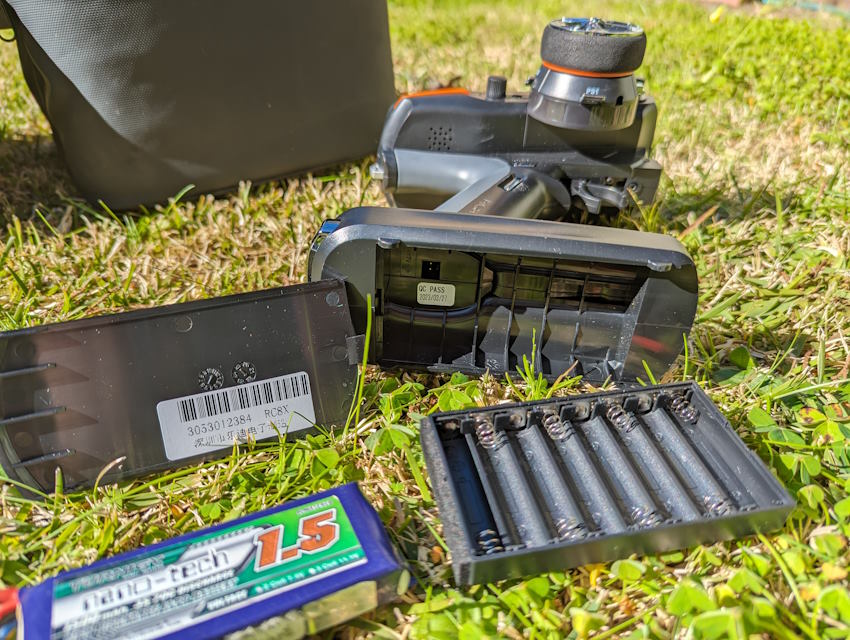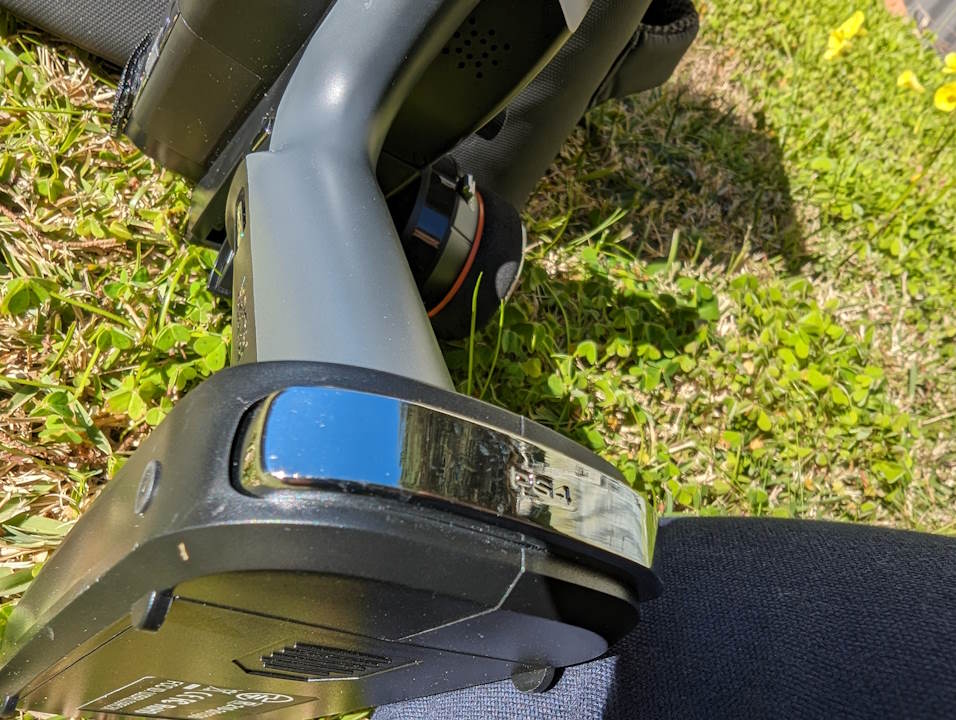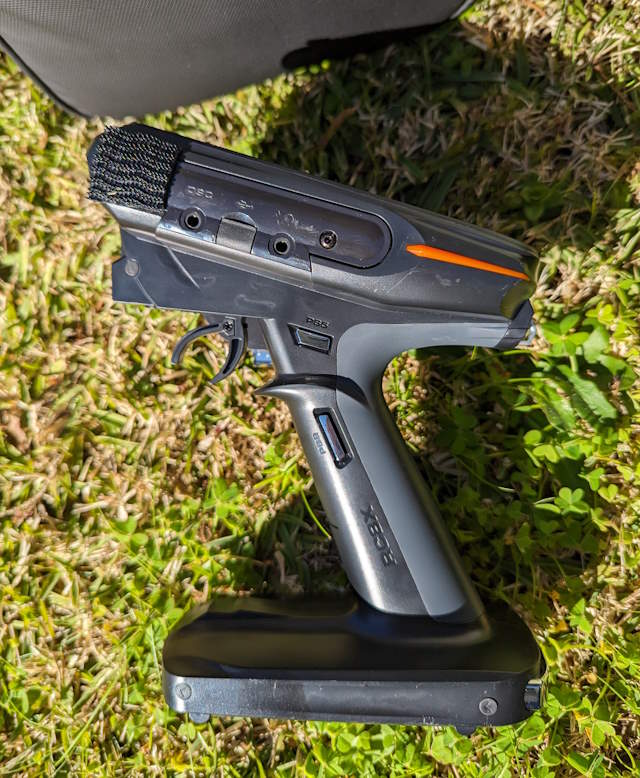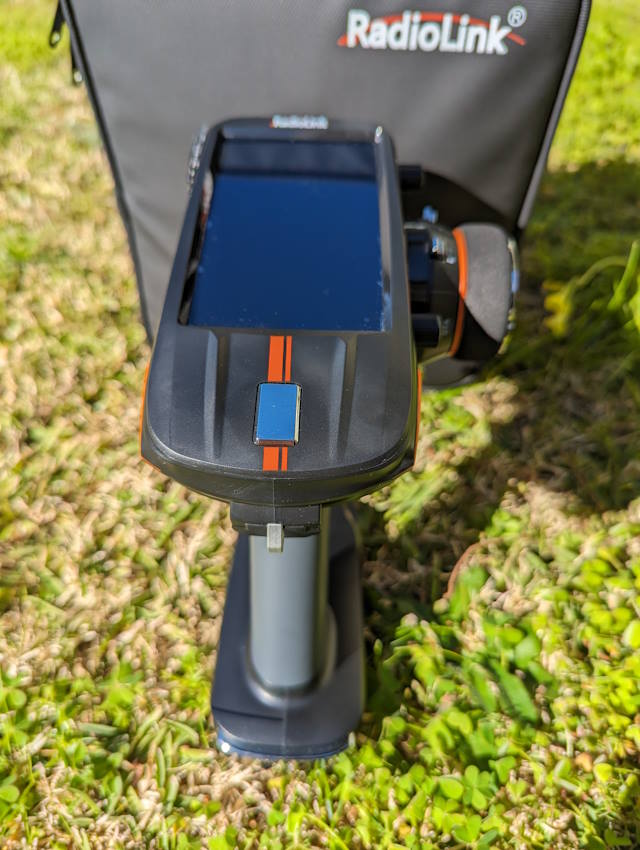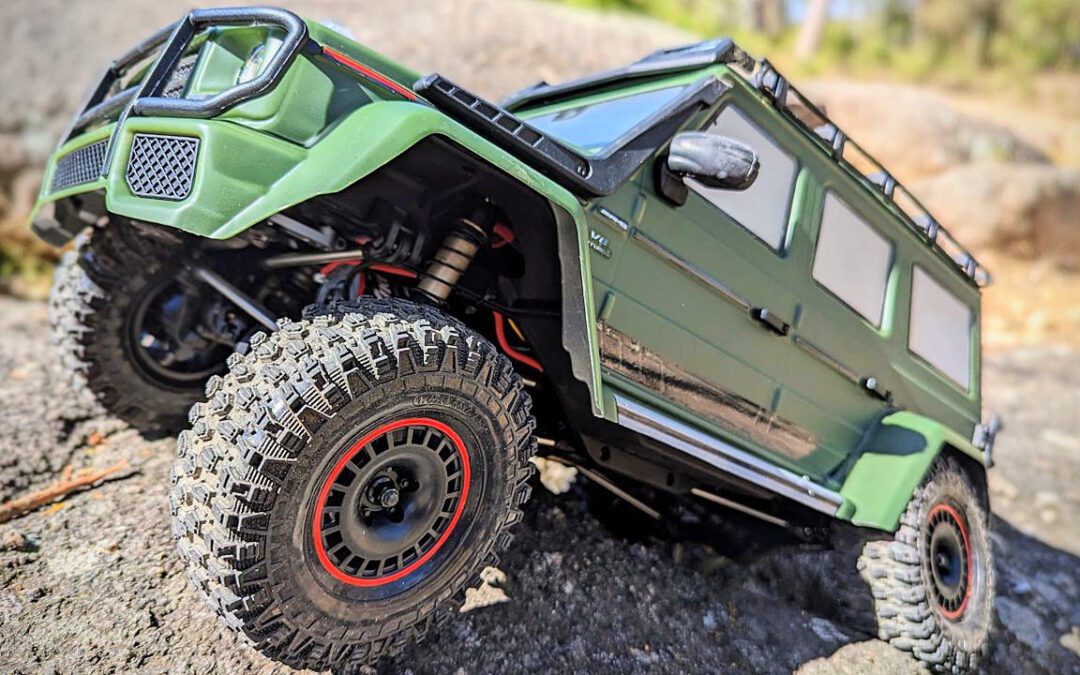
Yikong 4106 Pro Has a Party Trick!
Inspiration, Not Imitation
Yikong 4106 Pro is a 1/10 RC crawler with an ability we have not yet seen in the RC crawling world. You may not have heard of Yikong before, but they’ve been quietly making some interesting models over 2023 and now 2024. This latest one will knock your socks off, once you consider the ramifications of what they’ve made. But first, some details.
This is a model that combines the best features of the offerings of the likes of Axial’s SCX10 III with 2-speed transmission and DIG (disengages drive to the rear, then locks the rear, for tight turning and improved rock crawling ability) and the Traxxas TRX4 with its remotely activated locking diffs.
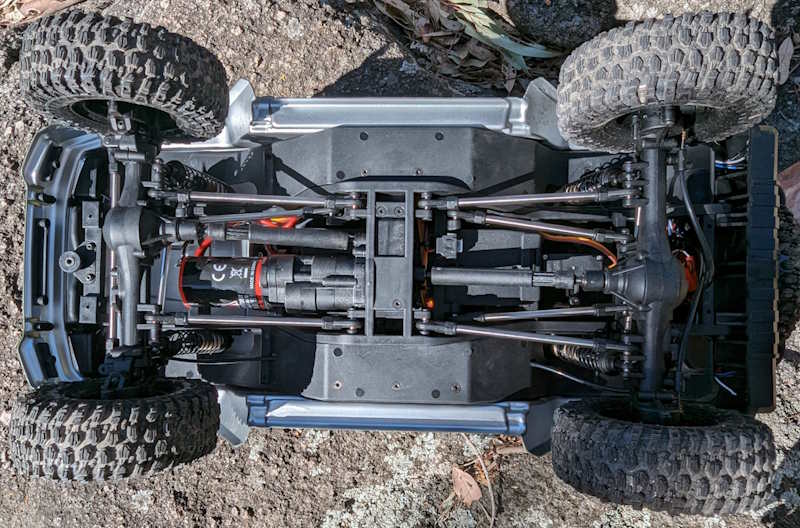
The Killer Feature
But what makes the Yikong 4106 Pro special is something new that we haven’t seen in RC cars ever before: independent disc brakes! They’re only in the rear and they activate via a button that mixes their function with the vehicle’s steering. They work by clamping the inside wheel on a turn, when activated. So, when you turn left, for example, the rear-left wheel is braked, helping to really tighten the vehicle’s turning circle. Genius!
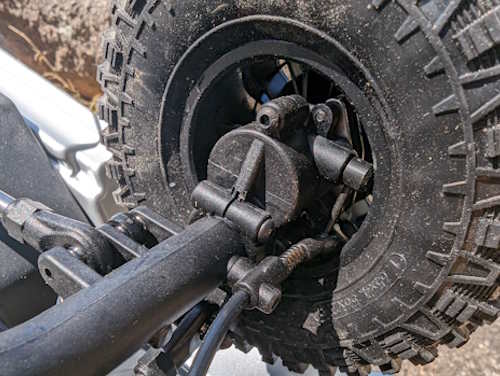
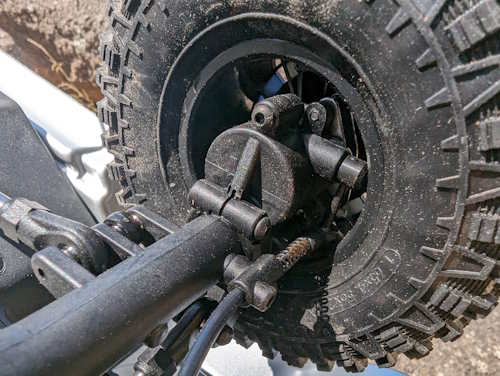
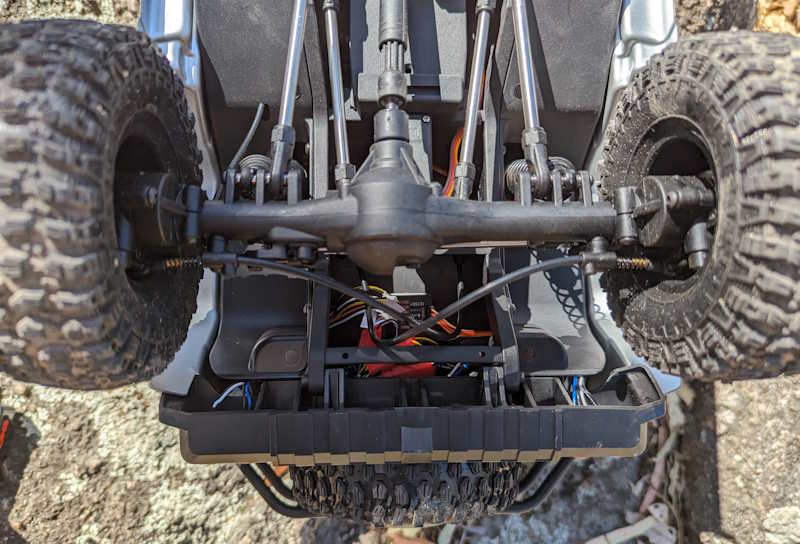
On the Floaty Side
The suspension is a bit on the floaty side, with considerable body roll. The vehicle has portal axles, which helps cancel out torque twist while also increasing undercarriage clearance on rough terrain. The shocks are “oil-filled” but the unit I received had “oily” but empty shocks. I’d suggest adding 30wt oil to create some needed damping.
Shocks can be mounted in a variety of positions, which is very welcome. They’re neutral, by default, and I like them there for trail and light crawling. Shock preload is adjustable by thumbscrews, and I found that winding on about 8mm in the rear really helped it with crawling. Now it isn’t so fast to lift a front wheel on steep ascents.
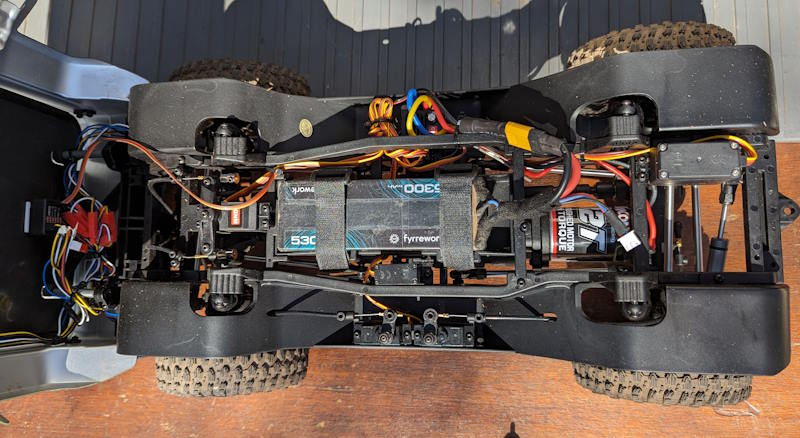
4106 Pro Servos
In the below photo, there are three servos closest to the camera. The first two are the diff lock servos, and then the one closer to the battery is the 2-speed servo. These are waterproofed servos with low power, I’m guessing maybe 2-3kg. Plastic gears, plastic spline, that kind of thing.
My front diff lock servo was broken, out of the box. I may replace it with another similarly cheap unit, or I may even just leave it be. I don’t mind the front being locked all the time. It’s the rear one that wants to be able to unlock, both for general driving and so that the ‘tank steer’ feature can work correctly.
The steering servo is a metal geared unit and has plenty of punch. I’m guessing 15kg or so, which is fine for this car.
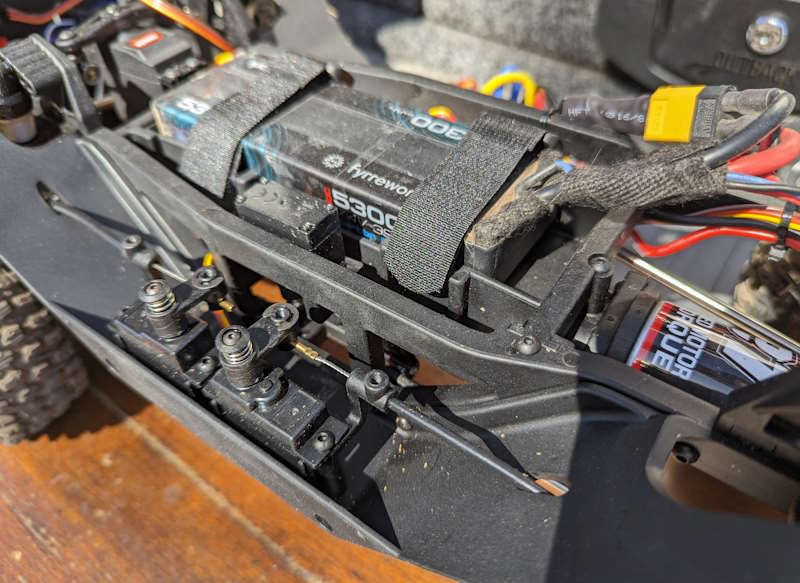
Electronics
The ESC and receiver are an all-in-one unit from Flysky, which is OEM-only at time of writing. The Flysky FS-MG11-BS radio system incorporates a connected light kit that is designed to work with the radio system. It manages a lot of complexity in an elegant way. I like it. (It’s the same one you’ll find with the new FMS FCX10 1/10 model, and no doubt we’ll see it in other vehicles soon, too).
The car can take either a NiMH battery (6 or 7 cell), or 2S or 3S lipos. The ESC has a Deans (or T) connector. The power switch is located underneath, behind the skid, and is waterproofed.
The radio transmitter takes 4x AA batteries and you’ll need to supply all the batteries for this vehicle.
The motor is a large, 550-sized can with 32 turns. It’s well suited to the vehicle and I like it on both 2S and 3S.
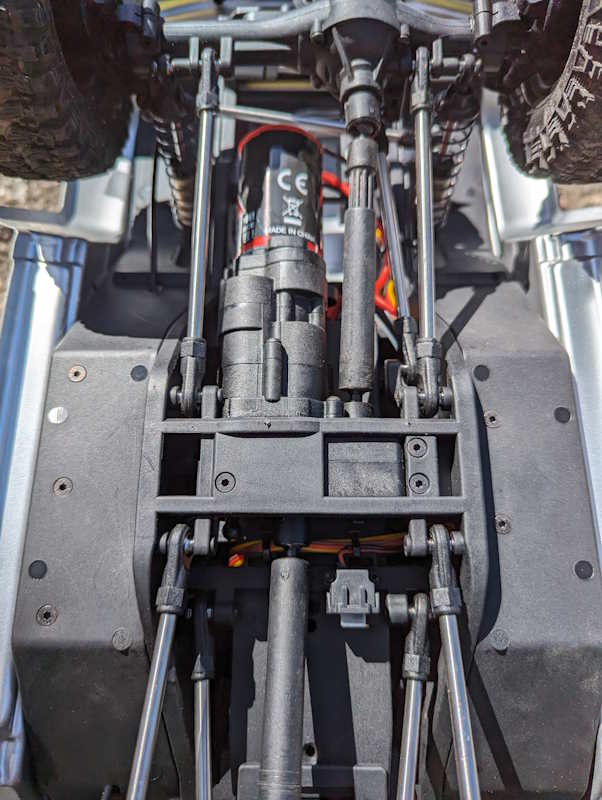
Axles & Undercarriage
Axles are a pleasing scale design, with smooth lines and bolts in the right places. They engage well, seem like they’ll be durable, and the portals are tastefully implemented. No hulking, unnecessary chunks of plastic here. The front axles are steel universals, adding to their strength and something I always want to see in a crawler.
Thoughtful design is what you’ll find underneath the vehicle. Stainless steel links and inverse-rotation drive shafts are also like this. There’s a servo saver in the form of a passive steering damper on the steering link, too. It’s a solid undercarriage, overall. Nothing is hanging down to be grabbed by sticks or rocks and it just looks good.
Now, you may have read that it has a molded plastic chassis instead of the usual steel stamped C-channel rails. This is true. But, it works. The car is lighter for it, flex isn’t a huge issue and it keeps the cost down. I don’t see a down side in this model with that choice.
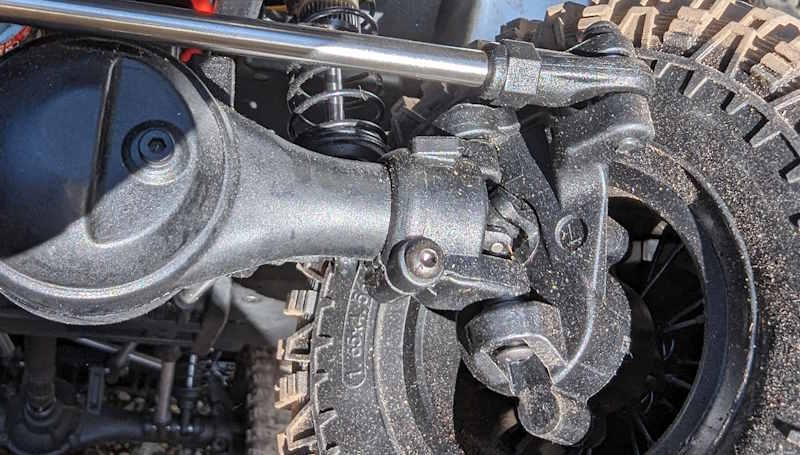
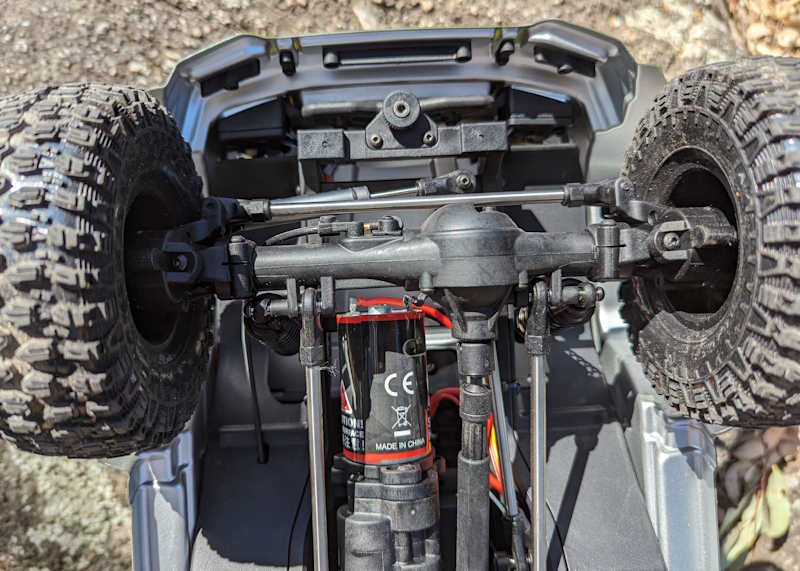
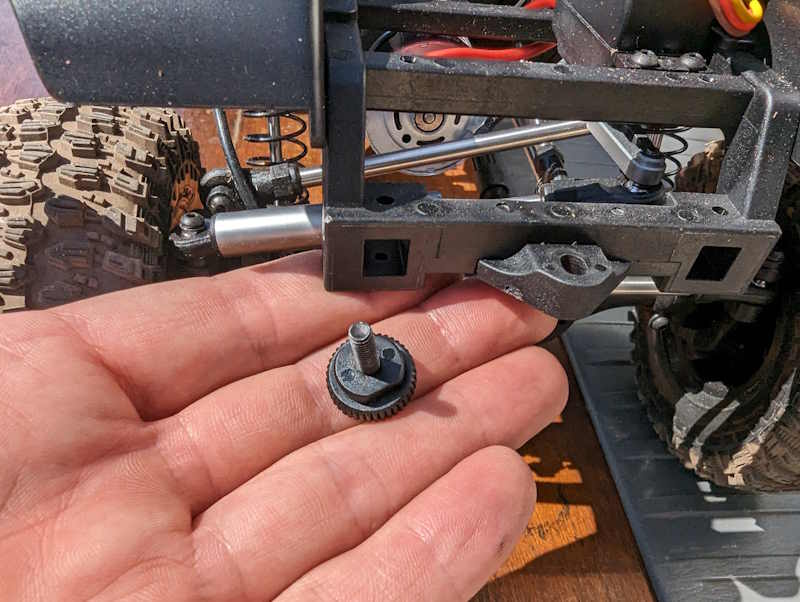
Mercedes & Hyrax: Clone Wars
The wheels are 2.2″ and look like the real thing, with the tiny Mercedes G-Wagon spokes around a solid wheel hub. The tire treads are not so scale, being a Proline Hyrax clone, but run on a 4.56″ tire carcass, which Proline does not make. Not entirely a clone, then – though the treads themselves clearly are Hyrax. The foams are a little on the firm side but they work well.
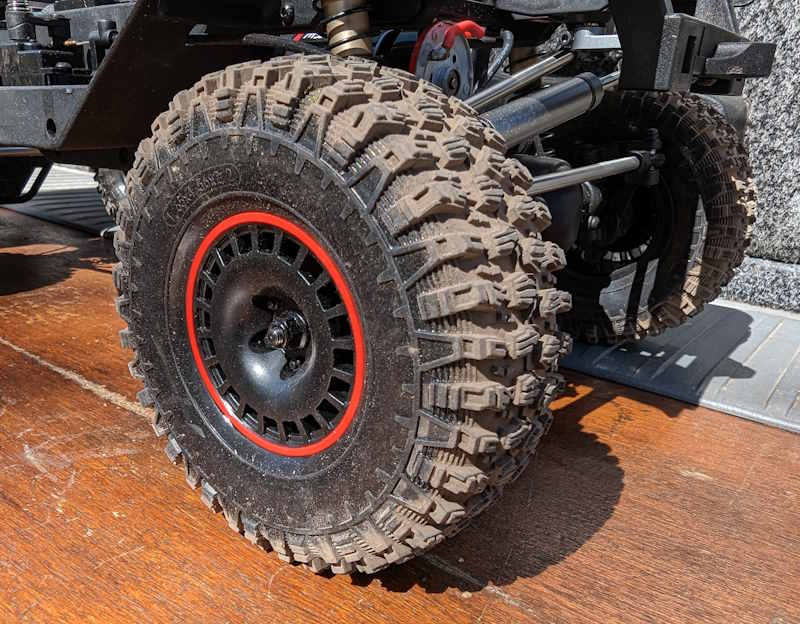
A Mysterious Interior
This G63 body has a complete interior, including dash, steering wheel, dash details and shifters, seats front and rear, and nicely finished. It’s in moulded polycarbonate, keeping the weight low.
However, there’s been a weird decision to apply a frosted, semi-opaque paint layer to the inside of the body on the windows, making it possible to only see the blurred outline of the seats, at best. Why go to the trouble and expense of including an interior, only to hide it? Perhaps subsequent manufacturing runs have removed the paint from the windows. I hope so.
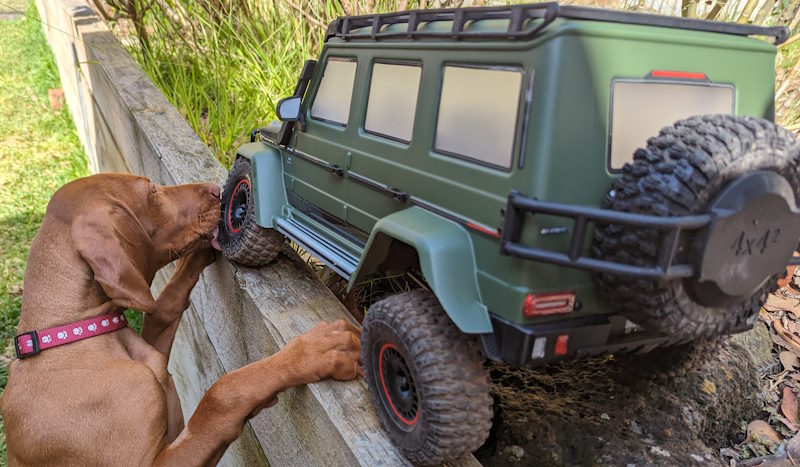
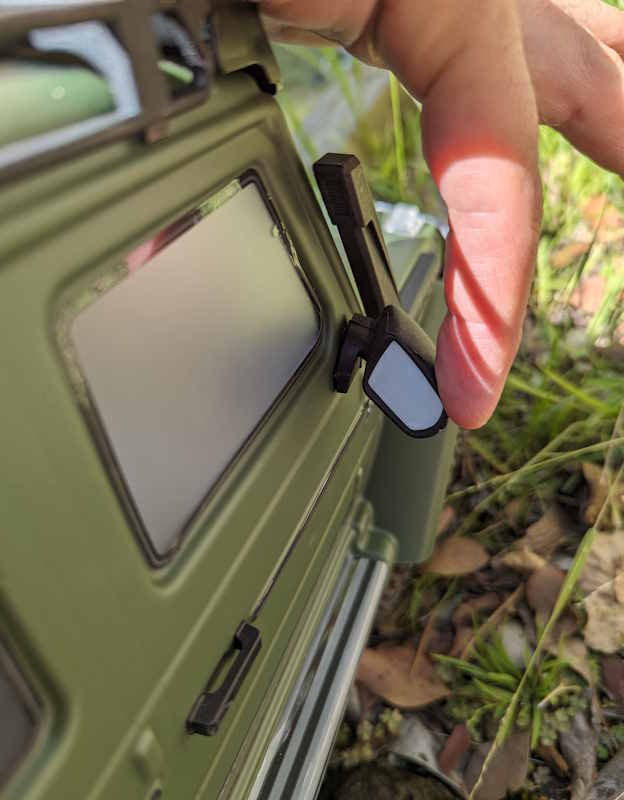
Front Bumper Dilemma
The car comes with a solid plastic front bumper that can be installed. By default, it is not installed, instead allowing the stock polycarbonate body to show off its pretty, moulded front lower grille. If you want to install that front bumper, some of the body needs to be cut away to fit it. I was going to do this on mine but realised it would look worse. Cutting it is a one-way decision, so I’ve decided to keep mine as it is.
I should also add a note here about the sliders. They look like the aluminum of the real car -that is to say, they’re molded and painted on the polycarbonate body here. That means they look great, but it also means they’re weak. Just like the real thing, they’re really just for looks. You could beef it up with steel or plastic underneath, but it would be a custom job. As far as I know, there aren’t after-market rock sliders available for this model (yet).
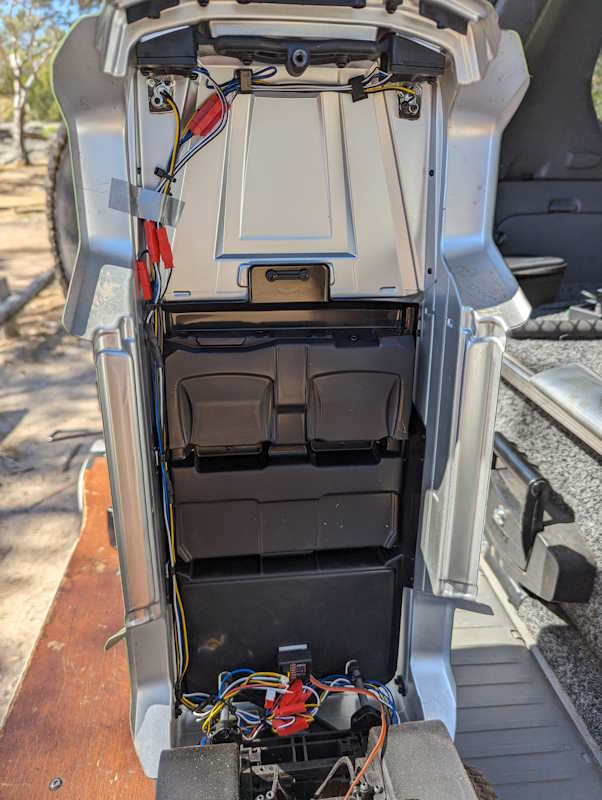
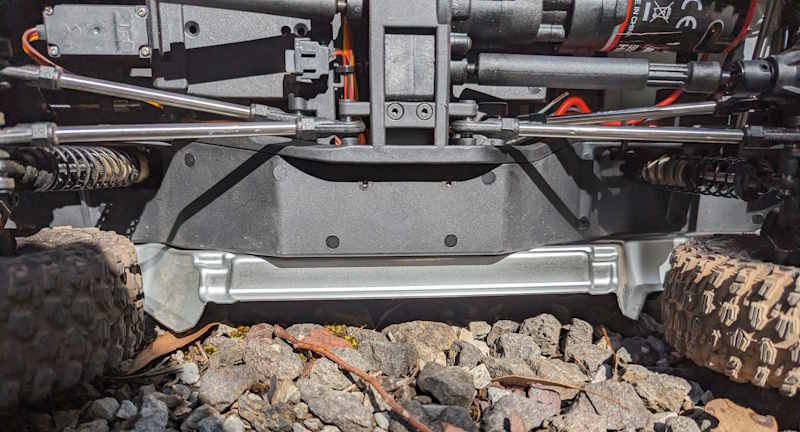
Lighting Up the Trail
The body also enjoys a complete light system. It functions as part of the integrated Flysky receiver/ESC/light unit and provides full-function lighting. Low beam, high beam, flashing, indicators, braking, reverse, and fog lights are all part of the vehicle’s abilities. Looks great and you can switch between off, low, high, and flashing configurations.
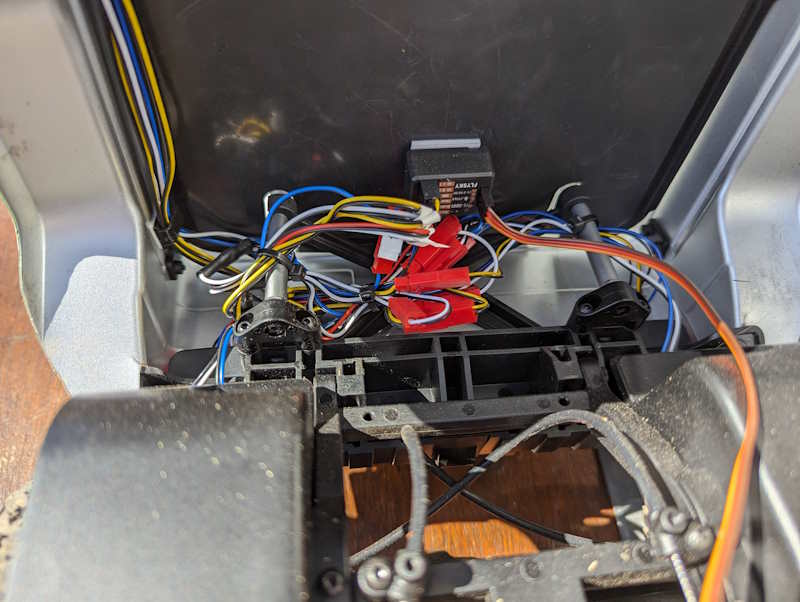
Drive Modes
Also part of the Flysky system is a set of DIP switches on the radio transmitter. Switch 1 toggles driving mode from Fwd/Brk/Rev (trail driving) to Fwd/Rev (crawling). In the Trail mode, the taillights increase red luminosity when braking. In Crawl mode, there is no braking; you simply see the white Reverse lights when reversing, and the low-glow red taillights when otherwise stationary or driving.
Speaking of the transmitter, the wheel feels very premium. There’s a weight to it, though plastic, that has the feel of a much more expensive radio. The spring is light, the balance neutral, and it just feels great to use. The throttle trigger also has a pleasingly light action.
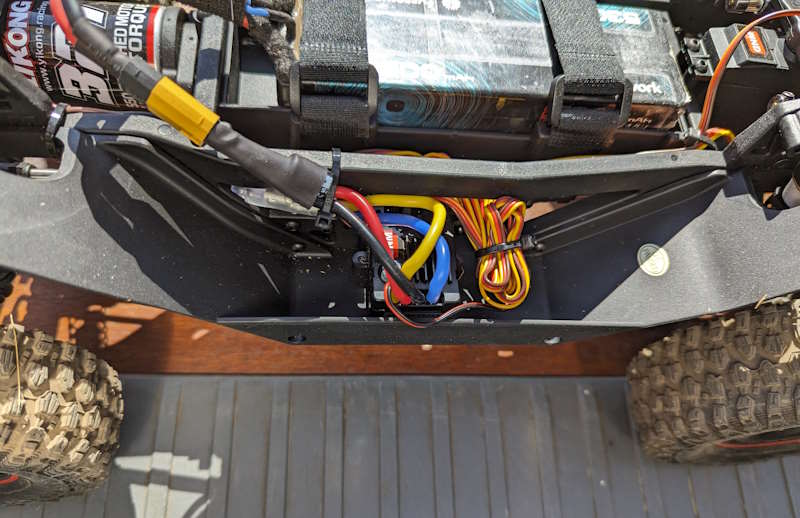
Radio Freedom
There are many options on this radio and happily, many are not used. There’s a thumb dial that has maybe 5mm of movement from neutral in each direction – that isn’t populated on the receiver, so it’d make a great winch controller or rear steer option.
On top, there’s a button and a dial that also aren’t used on the receiver (unless mixing interferes with this; I haven’t tested them yet), but you end up with quite a few options. You could put a sound system in the car and have the spare top button as a horn, for example.
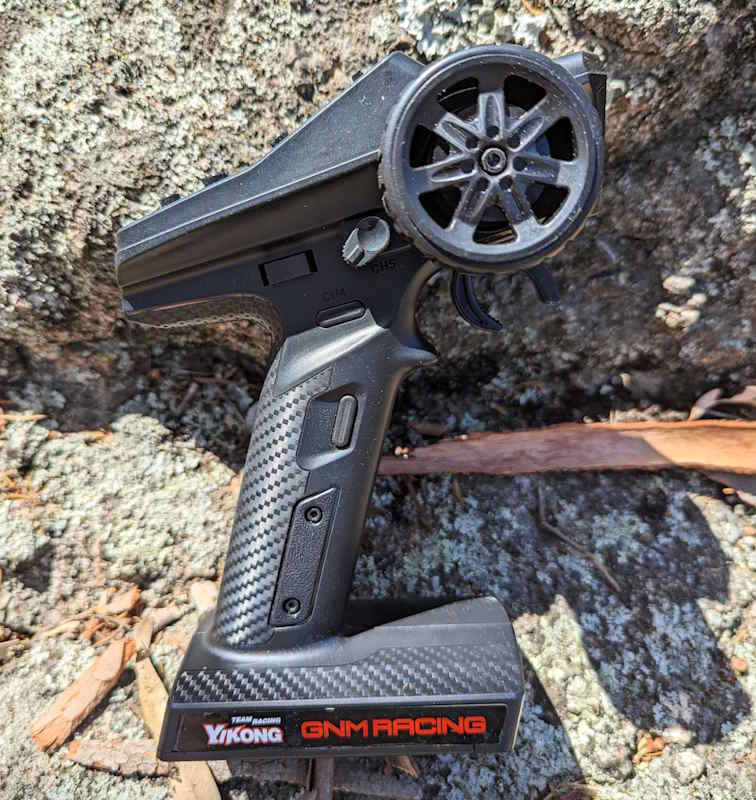
Drag Brake on the Fly
Lastly, the radio also gives you a dial (Ch.11/Drag Brake) that allows the drag brake rate and intensity to be adjusted on the fly. The maximum setting feels like the equivalent of about 70% drag brake on a WP-1080 ESC (incidentally, see our programming guide here), in this vehicle. The minimum setting is basically zero drag brake. My video review shows the difference between these on the steep rock descent near the end. It’s a nifty feature.
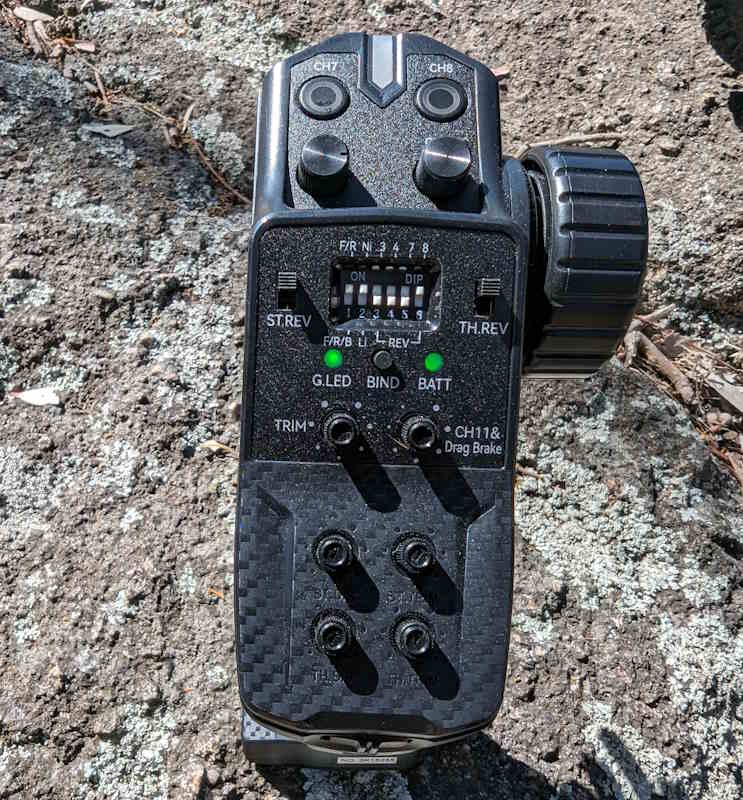
Yikong 4106 Pro Driving Dynamics
The car drives quite nicely. This is a scale vehicle more than a performance machine. With it’s many driving accessories, it’s very fun to play around with. The two-speed transmission has a pleasingly wide ratio between first and second. The lockers engage nicely – well, I should say, the rear one does.
The front one does too, when I do it manually, but my front locker servo arrived faulty, so I can’t tell you from experience. I’ll swap mine out for a replacement servo (just a mini size, they’re pretty universal, so no worries there) and it’ll be fine. The so-called ‘tank turn’ feature of those rear disc brakes is just fabulous, and the lighting kit in the pretty body makes night driving possible and day driving more scale.
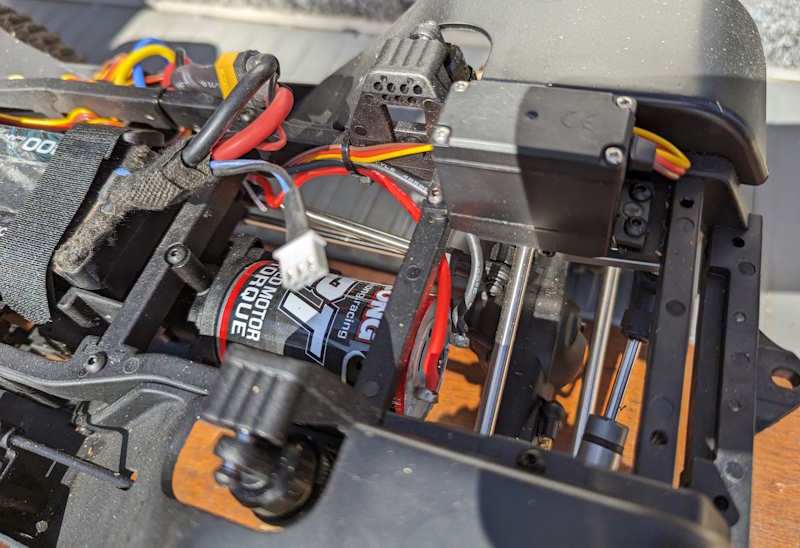
Back to the Big Thing
Now, onto those ramifications I mentioned in the intro: independent disc brakes. Yes, this model uses a single servo to modulate between left and right, for the sole purpose of tightening your steering radius when active. It works well. But as a proof of concept, now we know disc brakes work and that they can be rugged enough to be effective in an active, wet-n-dirty off-roader. On its own, that’s already impressive, right?
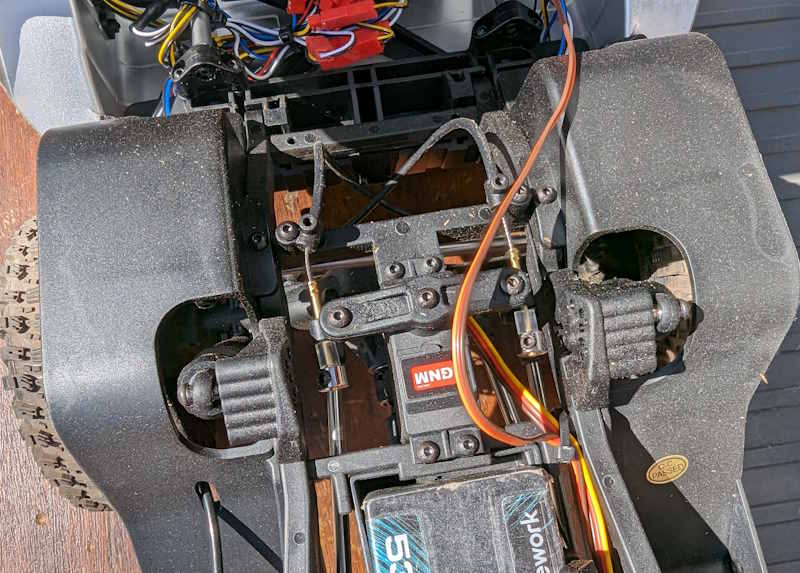
Now Think BIG
Okay, now think about faster cars. The Arrma Infraction has a disc brake on the rear outdrive from the transmission, for example. (Incidentally, buy an Infraction using this link for a discounted purchase; it’s my all-time favourite street car and so very worth it). Already a super fun, super powerful street machine, you now effectively have a hand brake feature on an 80mph-capable street basher. Nitros have also been using a disc brake on the drive shaft for years.
But to have disc brakes independently on each wheel? This means the traction control of full-size cars can be brought into road and track RC cars! Do you see the potential here? We already have the technology in the tiny ESC modules of current RC vehicles. Add a few extra servos and now you have something that can brake each wheel as traction is lost in a corner or under acceleration, and so on. What an exciting idea! I don’t know of any other manufacturer currently doing this, but I’m hopeful and excited to see more. Wow!
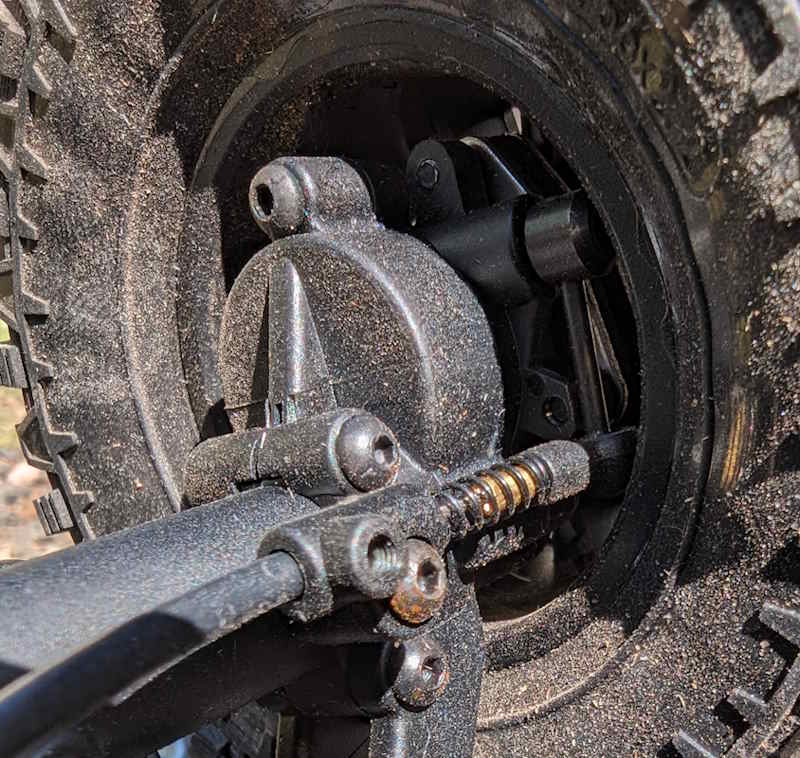
Final Thoughts
Frosted interior windows aside, the Yikong 4106 Pro is very well thought out. A manual would be appreciated, especially for hobby newcomers, as there’s a LOT going on with the radio. Thankfully, it’s well labelled.
I don’t support the blatant IP theft that Yikong have seemingly undertaken from Mercedes with the pretty G Wagon body, nor from the Hyrax tires. But, on the whole, they’ve created something special.
I’m loving the progress we’re seeing from these smaller brands and I’m so pleased the Yikong 4106Pro is not just another clone of an existing vehicle. It’s fun to drive, capable for what it is (think ‘Class 1 comp crawler’ and you’ll be pleasantly surprised) and it looks great. Recommended.
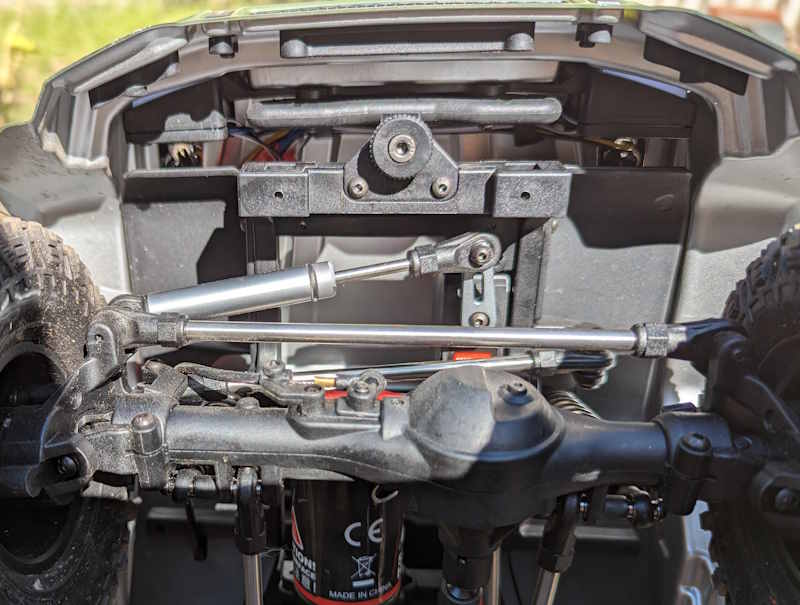
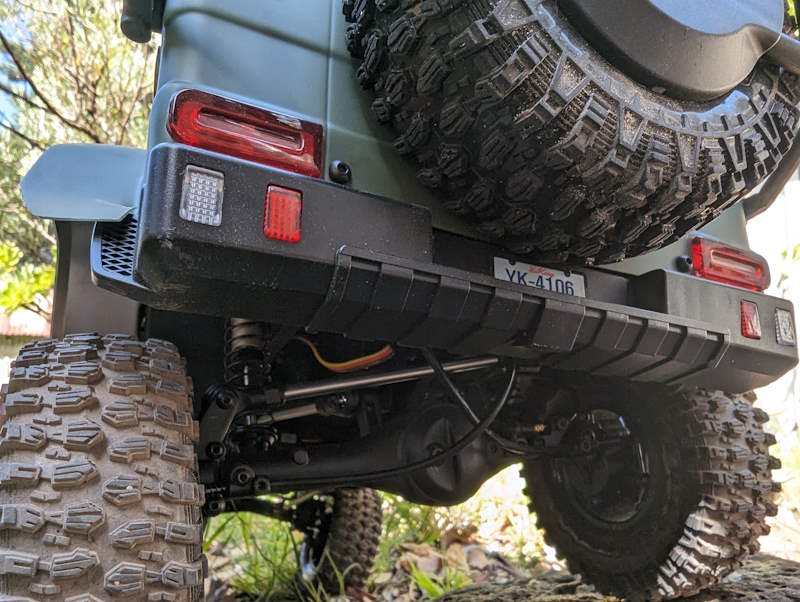

Craig Veness
RC-TNT
Craig has been into radio control since the 90s and into RC crawling since about 2010, when a Losi MRC started the obsession! Now it's all rocks this and crawl that and upgrade all the things! ...You know how it is, right? Welcome home 🙂
A note on affiliate links: we purchased this vehicle ourselves for test & review purposes. Some of the links in the above article are affiliate links, which means we may be paid a small commission if you choose to click on them to make a purchase. As always, we make effort to ensure that no review is impacted by this – we still report on bugs and issues encountered during product testing, and our fixes or solutions if found. Thank you for reading and happy RC-ing!

